

|
|
Seven-Ups (The) (Blu-ray)
[Blu-ray]
Blu-ray B - United Kingdom - Signal One Review written by and copyright: Paul Lewis (4th July 2016). |
|
The Film
 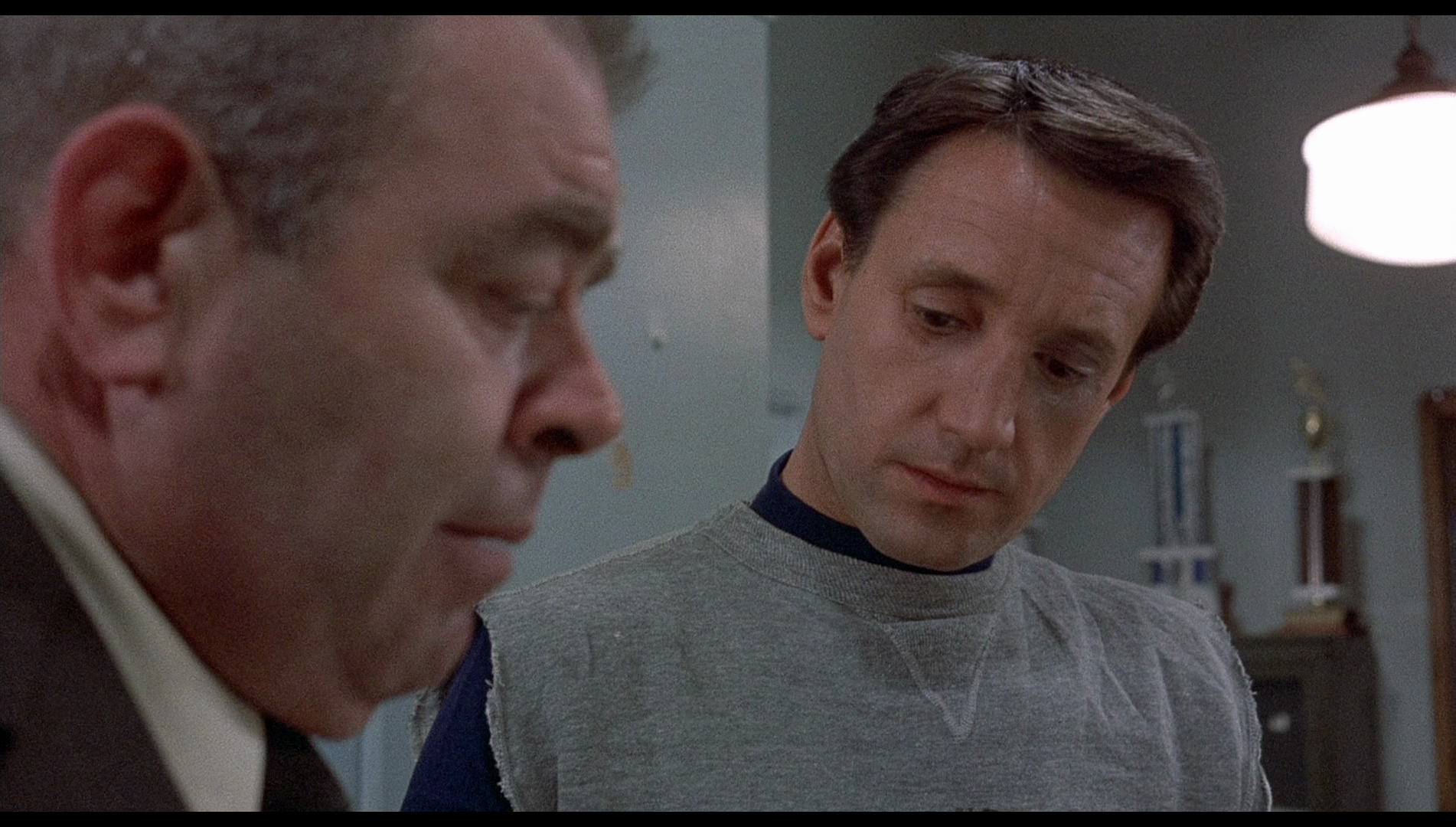 The Seven-Ups (Philip D’Antoni, 1973) The Seven-Ups (Philip D’Antoni, 1973)
With The Seven-Ups (Philip D’Antoni, 1973), the producer of Peter Yates’ Bullitt (1968) and William Friedkin’s The French Connection (1971) attempted to ‘one-up’ his two earlier productions, known for their pivotal and gritty car chase sequences, and took the role of director to do so. The Seven-Ups focuses on Buddy Manucci (Roy Scheider), head of a special unit within New York’s police department, ‘The Seven-Ups’. Buddy’s team have earned their name owing to their reputation for catching high-profile criminals within the world of organised crime, resulting in these criminals receiving a sentence of seven years or more (‘seven or up’). As the film begins, Buddy is shown on the city streets, watching his team’s target. This target is a counterfeiter who is using the office above an antiques shop to sell his wares. Buddy’s team’s bust is a success; although some of their colleagues express disapproval the methods employed by the team, they are successful in fending off organised crime. Buddy’s childhood pal Vito Lucia (Tony Lo Bianco), an undertaker, acts as Buddy’s informant. The pair meet regularly and surreptitiously (so as to not blow Vito’s cover), with Vito providing Buddy information about the activities within the criminal underworld. During their meetings, they reminisce about their shared childhood. However, Buddy is unaware that each time they meet, Vito is also mining Buddy for information. Along with two hoods, Moon (Richard Lynch) and Bo (Bill Hickman), Vito is part of a kidnap syndicate, using the information from Buddy to identify high value targets within the criminal underworld, kidnapping them and holding them to ransom – with the knowledge that these men are unlikely to turn to the police for help. 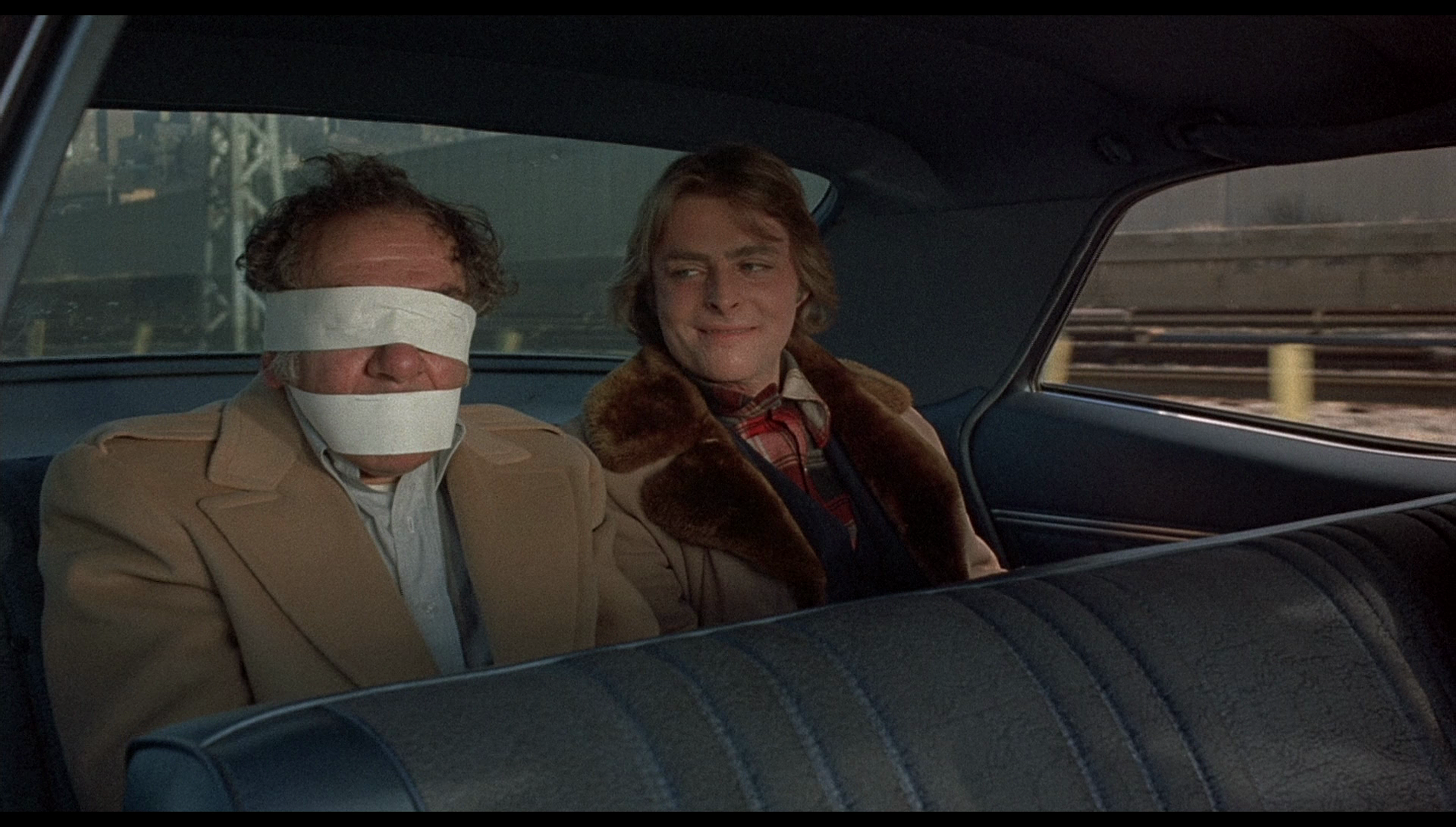 Buddy is desperate to get his hands on Festa (Matt Russo), a local high-ranking Mafioso. Acting on information from Vito, Buddy’s team stake out a funeral in the hopes of uncovering evidence about Festa’s activities and his whereabouts. However, the hoods believe that a rogue group within the police force is responsible for the kidnappings, and when one of Buddy’s men, Ansel (Ken Kercheval), is discovered by the hoods, they abduct the undercover detective and place him in the trunk of a car. After noting Ansel’s disappearance, Buddy tails one of the hood’s cars, unaware that Ansel is in the trunk. In a parking garage, the hood driving the car is held up by Moon and Bo. Moon kills the elderly driver of the car and fills the trunk full of lead, killing Ansel. Buddy arrives in time to find Ansel’s body and pursues Moon and Bo. The pursuit takes Buddy through the streets of the city and ends with Buddy’s car colliding with a truck, destroying the vehicle and almost killing Buddy. Buddy is desperate to get his hands on Festa (Matt Russo), a local high-ranking Mafioso. Acting on information from Vito, Buddy’s team stake out a funeral in the hopes of uncovering evidence about Festa’s activities and his whereabouts. However, the hoods believe that a rogue group within the police force is responsible for the kidnappings, and when one of Buddy’s men, Ansel (Ken Kercheval), is discovered by the hoods, they abduct the undercover detective and place him in the trunk of a car. After noting Ansel’s disappearance, Buddy tails one of the hood’s cars, unaware that Ansel is in the trunk. In a parking garage, the hood driving the car is held up by Moon and Bo. Moon kills the elderly driver of the car and fills the trunk full of lead, killing Ansel. Buddy arrives in time to find Ansel’s body and pursues Moon and Bo. The pursuit takes Buddy through the streets of the city and ends with Buddy’s car colliding with a truck, destroying the vehicle and almost killing Buddy.
At the hospital where Ansel’s death is declared, Buddy is ‘grounded’ by his boss until the investigation into what happened at the funeral has been concluded. However, Buddy begins to realise that Vito has betrayed him. Meanwhile, Vito tries to warn Moon and Bo to lie low; his pleas are ignored, however, and Moon in particular is utterly unrepentant. Buddy uses a reluctant witness, a petty criminal and employee of the parking garage named Toredano (Joe Spinnell), to trap Moon and Bo. 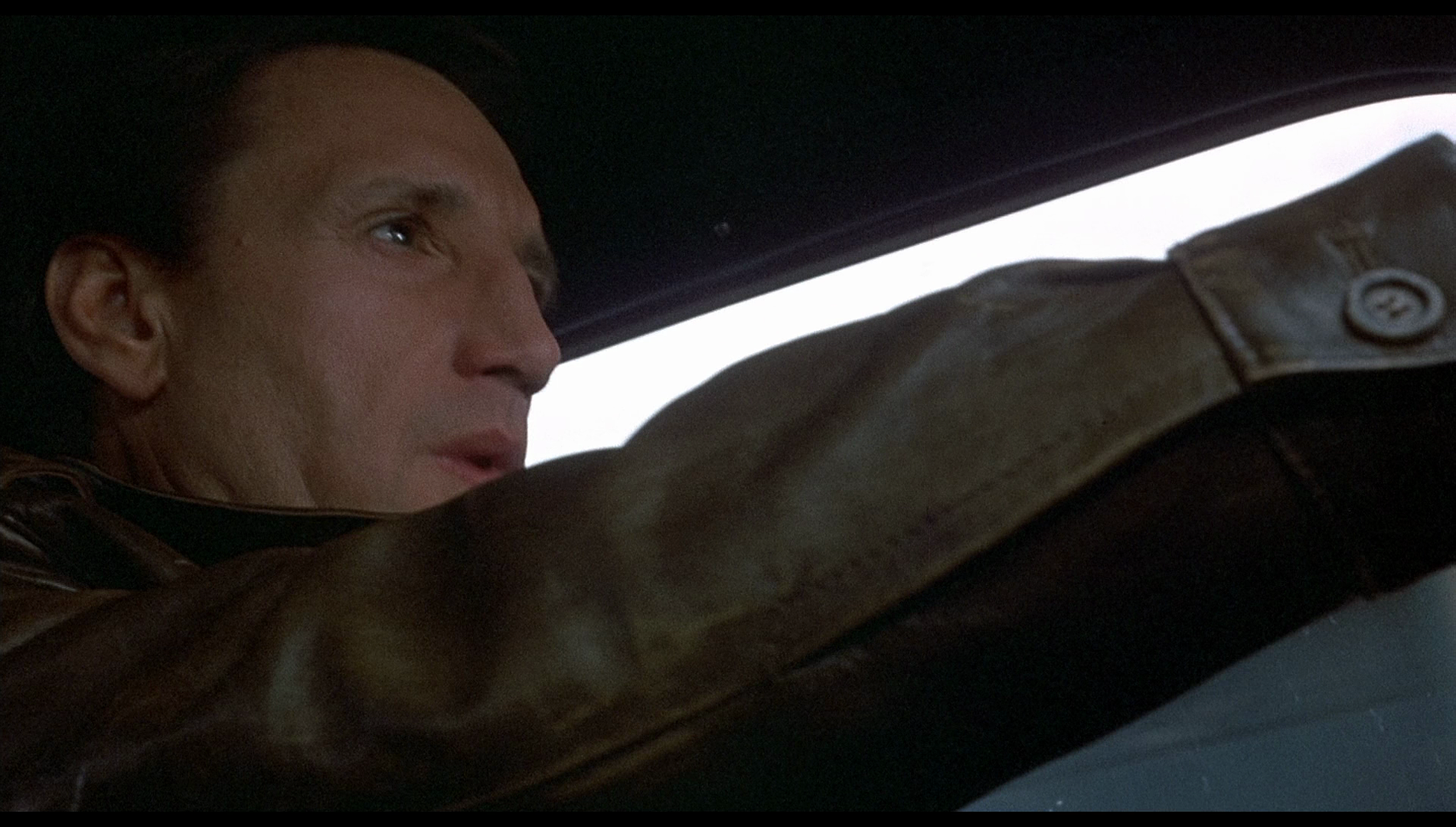 In some ways, in terms of how it mimics the narrative beats of The French Connection, at least in its early sequences, The Seven-Ups could arguably be suggested to be as formulaic as the sequels to Don Siegel’s Dirty Harry (1971): like Friedkin’s film, The Seven-Ups begins with a bust that defines the protagonist’s sense of theatrics, with one of Buddy’s team masquerading as the employee of a watercooler delivery firm, dropping his tub of water in the antiques shop and thus ‘running interference’ whilst the bust takes place. (The French Connection, of course, famously opens with Doyle dressed as Santa Claus, pursuing and cornering a suspect before launching into his ‘Did you ever pick your feet in Poughkeepsie?’ spiel.) In some ways, in terms of how it mimics the narrative beats of The French Connection, at least in its early sequences, The Seven-Ups could arguably be suggested to be as formulaic as the sequels to Don Siegel’s Dirty Harry (1971): like Friedkin’s film, The Seven-Ups begins with a bust that defines the protagonist’s sense of theatrics, with one of Buddy’s team masquerading as the employee of a watercooler delivery firm, dropping his tub of water in the antiques shop and thus ‘running interference’ whilst the bust takes place. (The French Connection, of course, famously opens with Doyle dressed as Santa Claus, pursuing and cornering a suspect before launching into his ‘Did you ever pick your feet in Poughkeepsie?’ spiel.)
The French Connection was based on the exploits of Eddie Egan and Sonny Grosso, the two former New York detectives who helped bust a large heroin ring in 1961. Their exploits formed the basis of the book The French Connection, written by Robin Moore and published in 1969, and in turn this book evolved into Friedkin’s film The French Connection. Egan and Grosso acted as technical advisers on the Friedkin picture; after The French Connection, both Grosso and Egan left behind their careers as detectives, with Grosso becoming deeply involved in film and television production. Egan’s career as a detective formed the basis for the 1973 film Badge 373 (directed by Howard Koch) and, much later, the pilot for an unproduced television series in 1986 called Popeye Doyle (in which Doyle, based on Egan, was played by Ed O’Neill). Grosso became involved in the film world as a technical advisor and some-time actor, working on television programmes such as Kojak (Universal, 1973-8) and films like William Friedkin’s Cruising (1980), offering advice based upon his experience as a detective in New York. Grosso has also had a very long career as a producer in both film and television; his credits in this role have been remarkably diverse, from the expected (cop dramas like the series Night Heat, 1985-8) to the much less predictable (Pee Wee’s Playhouse, 1986). 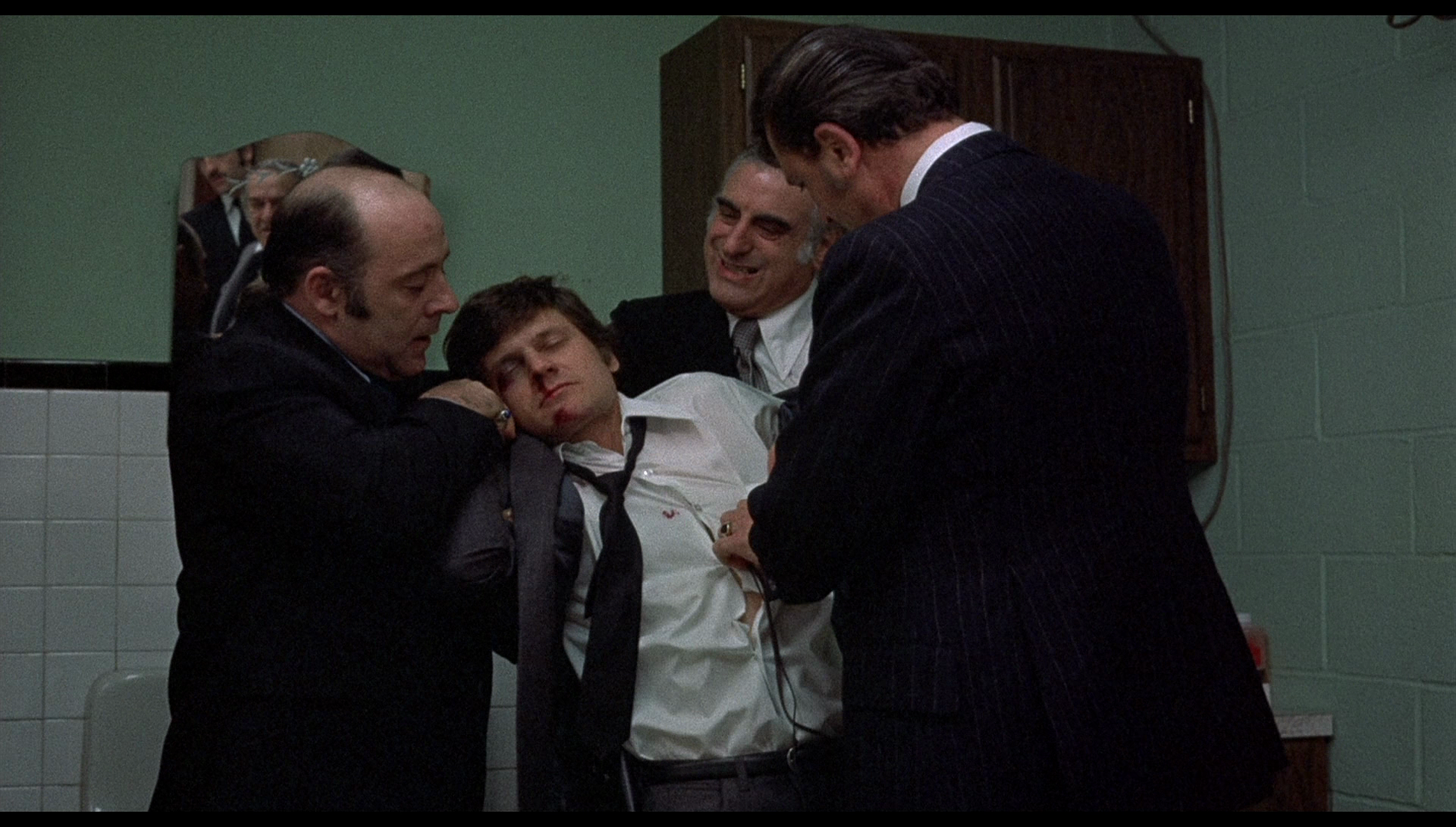 Grosso is given a story credit for The Seven-Ups, and it’s perhaps too easy to see his work on this picture as the originator of the narrative as an extension of his association with The French Connection, which had been heavily based on the real 1961 case on which Grosso had worked with Egan. In this sense, it’s tempting to read The Seven-Ups as a somewhat autobiographical film, with its basis in Grosso’s own experiences as a detective. Certainly, the film’s depiction of both police and criminal hierarchies is unsympathetic; the focus is on the ‘little guy’, the cog in the wheel who finds himself trapped by the larger forces that work around him. After Ansel’s death, Buddy’s autonomy is stripped from him by the police force; Buddy and his team are ‘grounded’ until the investigation into Ansel’s murder has reached its conclusion. ‘One of our guys gets murdered’, Buddy asserts angrily, ‘and we get investigated?!’ Certainly, from its early sequences onwards the picture depicts the cops as lowly victims of bureaucracy, whilst the criminals are surrounded by the trappings of wealth: the antiques store in which the counterfeit money is changing hands; the plush hotel that Kalish (Larry Haines), the ‘shylock’, uses. These criminals are often polite and soft-spoken, in contrast with the severity and crudity of the police; this is perhaps necessary to establish Kalish, for example, as a victim who deserves the audience’s sympathy when, working under Vito’s orders, Moon and Bo abduct him and hold him for ransom; but nevertheless it establishes a cultural opposition between criminals and police. On the other hand, Vito seems to be at the bottom of the criminal food chain, expressing at the end of the picture that he organised the kidnapping ring out of economic necessity – the need to pay his bills and keep a roof over the heads of his wife and children (‘I didn’t do anything to hurt you! I didn’t want your people to get hurt! I did it for Rose, the kids, the bills’, Vito declares). It’s this that seems to drive almost all of the characters. When the hoods become aware that some of their number have been kidnapped and held ransom, some of them complain that they can’t turn to the police for help – until one of their number reminds them that ‘It’s [the kidnappings are] easy money. We would do the same thing’. Grosso is given a story credit for The Seven-Ups, and it’s perhaps too easy to see his work on this picture as the originator of the narrative as an extension of his association with The French Connection, which had been heavily based on the real 1961 case on which Grosso had worked with Egan. In this sense, it’s tempting to read The Seven-Ups as a somewhat autobiographical film, with its basis in Grosso’s own experiences as a detective. Certainly, the film’s depiction of both police and criminal hierarchies is unsympathetic; the focus is on the ‘little guy’, the cog in the wheel who finds himself trapped by the larger forces that work around him. After Ansel’s death, Buddy’s autonomy is stripped from him by the police force; Buddy and his team are ‘grounded’ until the investigation into Ansel’s murder has reached its conclusion. ‘One of our guys gets murdered’, Buddy asserts angrily, ‘and we get investigated?!’ Certainly, from its early sequences onwards the picture depicts the cops as lowly victims of bureaucracy, whilst the criminals are surrounded by the trappings of wealth: the antiques store in which the counterfeit money is changing hands; the plush hotel that Kalish (Larry Haines), the ‘shylock’, uses. These criminals are often polite and soft-spoken, in contrast with the severity and crudity of the police; this is perhaps necessary to establish Kalish, for example, as a victim who deserves the audience’s sympathy when, working under Vito’s orders, Moon and Bo abduct him and hold him for ransom; but nevertheless it establishes a cultural opposition between criminals and police. On the other hand, Vito seems to be at the bottom of the criminal food chain, expressing at the end of the picture that he organised the kidnapping ring out of economic necessity – the need to pay his bills and keep a roof over the heads of his wife and children (‘I didn’t do anything to hurt you! I didn’t want your people to get hurt! I did it for Rose, the kids, the bills’, Vito declares). It’s this that seems to drive almost all of the characters. When the hoods become aware that some of their number have been kidnapped and held ransom, some of them complain that they can’t turn to the police for help – until one of their number reminds them that ‘It’s [the kidnappings are] easy money. We would do the same thing’.
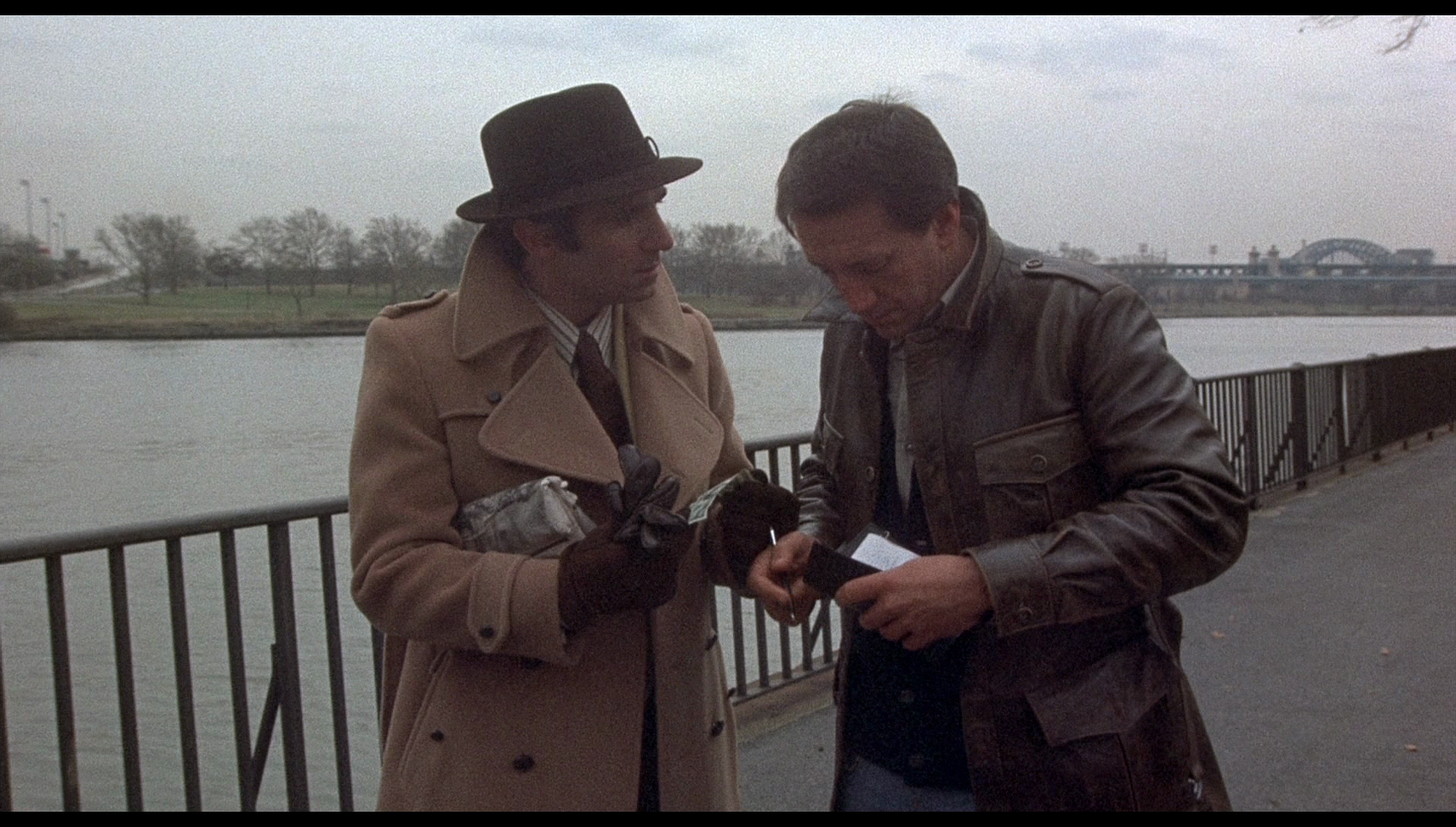 For his part, Vito organises Moon and Bo’s activities, but they display a callousness that is absent in Vito. When Ansel is killed, Vito wants to back away from the kidnappings. However, Moon is unrepentant. ‘The guy you iced was a cop’, Vito tells Moon, in reference to Ansel. ‘Okay, so he was a cop’, Moon laughs. Vito suggests that Moon should ‘get lost for a while. Get out of town’, He warns Moon that Buddy will catch up with him: ‘When this guy [Buddy] starts looking, forget it’, Vito declares. However, Moon responds by suggesting that he will kill Buddy. ‘Forget it’, Vito pleads, ‘It wasn’t part of the deal’. ‘Well, we’re going to have to change that deal if he comes looking for me’, Moon threatens. For his part, Vito organises Moon and Bo’s activities, but they display a callousness that is absent in Vito. When Ansel is killed, Vito wants to back away from the kidnappings. However, Moon is unrepentant. ‘The guy you iced was a cop’, Vito tells Moon, in reference to Ansel. ‘Okay, so he was a cop’, Moon laughs. Vito suggests that Moon should ‘get lost for a while. Get out of town’, He warns Moon that Buddy will catch up with him: ‘When this guy [Buddy] starts looking, forget it’, Vito declares. However, Moon responds by suggesting that he will kill Buddy. ‘Forget it’, Vito pleads, ‘It wasn’t part of the deal’. ‘Well, we’re going to have to change that deal if he comes looking for me’, Moon threatens.
At its core, much as The French Connection was about Popeye Doyle’s obsession with Charnier (aka ‘Frog One’) – with all the other characters manoeuvering about this duo like small moons pulled into the orbit of two huge planets – The Seven-Ups is about the relationship between Buddy Manucci and Vito, two childhood friends from the same neighbourhood who in middle-age find themselves on opposite sides of the law. In exploring this relationship, and repeatedly returning to the conversations between the pair in which nostalgic reflections about Buddy and Vito’s shared youth are combined with tidbits of information about the bosses of organised crime who Buddy’s team are investigating, the film throws up themes of nostalgia, our connection with the past and how it defines us in the present, the question of whether we can break free from the past, and the extent to which familiarity is (or should be) associated with loyalty. In their conversations with one another, Vito uses reminisces about his and Buddy’s shared childhoods to win over Buddy’s trust: consequently, whilst Buddy thinks he’s mining Vito for information, the reality is that the opposite is happening, and Vito is subtly extracting information from Buddy which he applies in his kidnap scheme. Ultimately, Buddy’s betrayal comes from the fact that he is sentimental about his past and nostalgic for it. 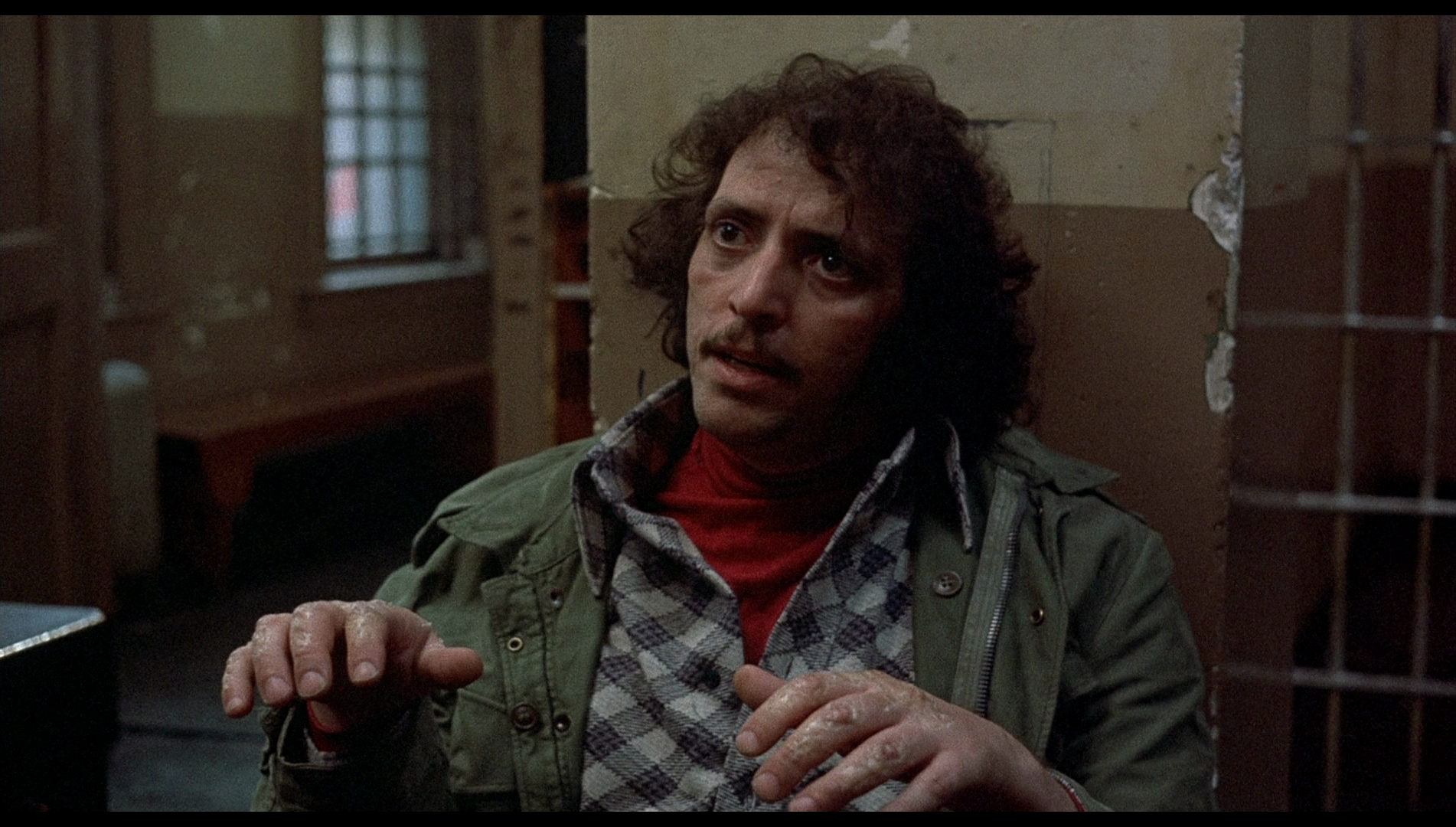 As Bill Mesce, Jr, suggests in Overkill: The Rise and Fall of Thriller Cinema, The Seven-Ups belongs to a long list of 1970s pictures about ‘harried, overburdened, under-resourced, under-appreciated’ detectives, which also includes films such as The French Connection and Fort Apache—The Bronx (Daniel Petrie, 1981) (Mesce, 2007: 135). In these films, the ‘ag[ing], decrepit stationhouse’ out of which the detective works ‘seems like a crumbling outpost in hostile country’ – something foregrounded in the title of Daniel Petrie’s film and also underscored in John Carpenter’s Assault on Precinct 13 (1976). The actions of the cop ‘are greeted with suspicion’, and in effect he is regarded by the locals as ‘a member of an “Occupying Army”, and not without some justification’ (ibid.). Early in the picture, The Seven-Ups establishes the rogue nature of Buddy’s squad and their questionable methods when Lieutenant Hanes (Robert Burr), a uniformed cop, complains to Buddy’s superior that ‘I don’t like their [The Seven-Ups] way of doing business [….] They’re not correct. That’s not what a cop is supposed to do’. Hanes uses the thin-end-of-the-wedge argument, suggesting that ‘You start out with that crap, where do you go? You forget about warrants? You start flaking guys?’ However, as the superior officer reminds Hanes, Buddy’s team’s methods work: ‘Those two wiseguys are going away’, he tells Hanes in reference to the counterfeiters busted in the opening sequence, ‘and not for sixty days. Seven or up’. As Bill Mesce, Jr, suggests in Overkill: The Rise and Fall of Thriller Cinema, The Seven-Ups belongs to a long list of 1970s pictures about ‘harried, overburdened, under-resourced, under-appreciated’ detectives, which also includes films such as The French Connection and Fort Apache—The Bronx (Daniel Petrie, 1981) (Mesce, 2007: 135). In these films, the ‘ag[ing], decrepit stationhouse’ out of which the detective works ‘seems like a crumbling outpost in hostile country’ – something foregrounded in the title of Daniel Petrie’s film and also underscored in John Carpenter’s Assault on Precinct 13 (1976). The actions of the cop ‘are greeted with suspicion’, and in effect he is regarded by the locals as ‘a member of an “Occupying Army”, and not without some justification’ (ibid.). Early in the picture, The Seven-Ups establishes the rogue nature of Buddy’s squad and their questionable methods when Lieutenant Hanes (Robert Burr), a uniformed cop, complains to Buddy’s superior that ‘I don’t like their [The Seven-Ups] way of doing business [….] They’re not correct. That’s not what a cop is supposed to do’. Hanes uses the thin-end-of-the-wedge argument, suggesting that ‘You start out with that crap, where do you go? You forget about warrants? You start flaking guys?’ However, as the superior officer reminds Hanes, Buddy’s team’s methods work: ‘Those two wiseguys are going away’, he tells Hanes in reference to the counterfeiters busted in the opening sequence, ‘and not for sixty days. Seven or up’.
Later in the film Buddy and his team meet their match from an unexpected direction when they detain Toredano, initially believing him to have something to do with the death of Ansel but gradually realising that he is only a material witness to the crime. Some of Buddy’s men threaten Toredano with violence, a threat reinforced by Buddy when he enters the room where the interrogation is taking place. In a moment played wonderfully by Spinell, Toredano raises his hands. ‘Look at my hands’, he tells Buddy’s team, ‘I been here before. I didn’t talk then; I ain’t talking now’. In this scene, Buddy’s team are shown using the tactics Hanes has suggested their earlier methods would lead to, threatening and beating a witness – a man who, despite being a petty criminal with a record, is utterly innocent of the crime that they are investigating. However, their violent methods fail to achieve their goal: this small-time crook and employee of the garage, a man even lower in the pecking order than Buddy, declares that he will not crack under threats of violence. In response, realising that he isn’t going to get anywhere with this man, Buddy turns around and walks out of the room. 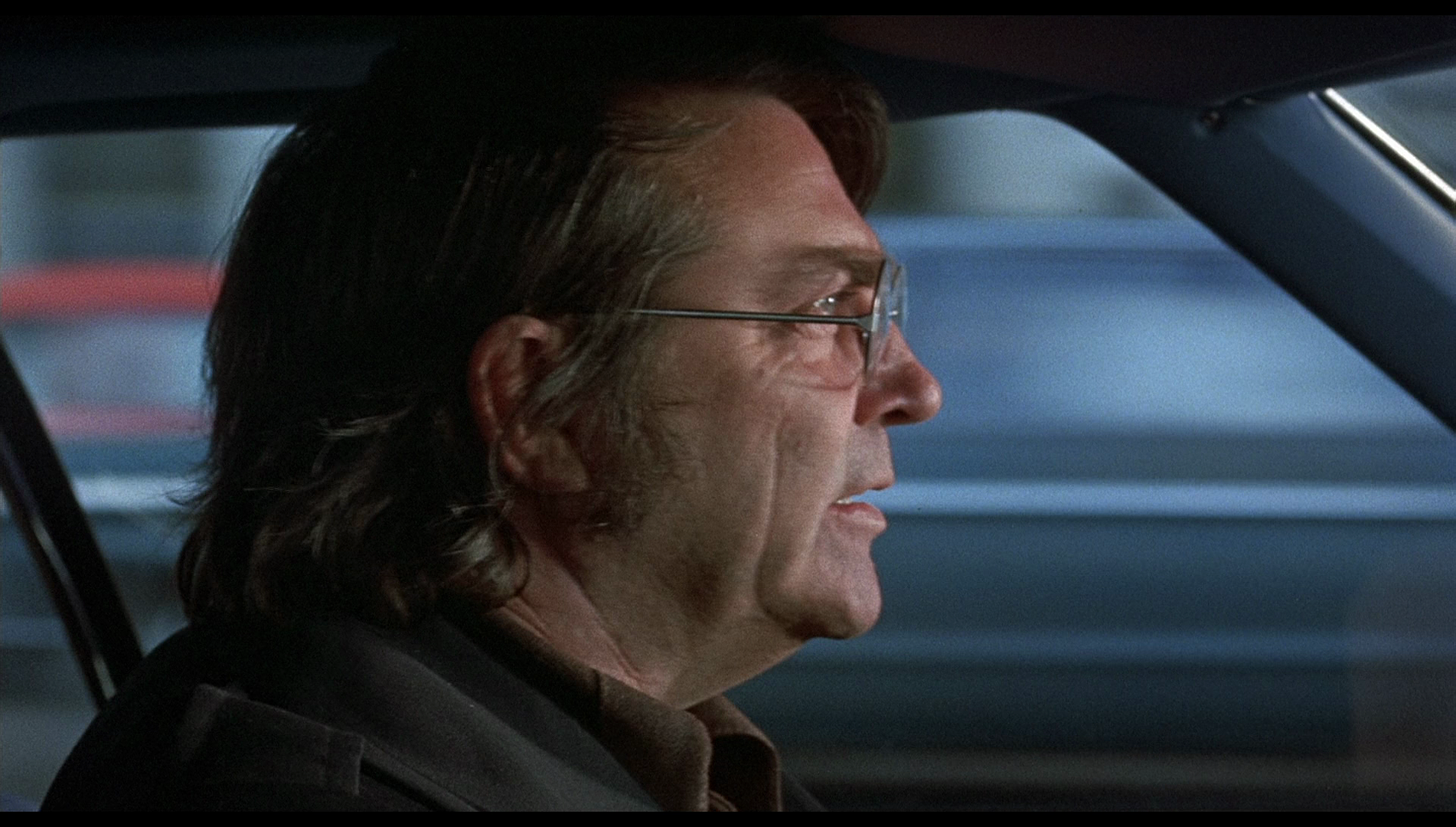 Integral to the car chase in this film, and in the D’Antoni-produced Bullitt and The French Connection, are the driving skills of Bill Hickman. In Bullitt, Hickman played one of the heavies, driving the Dodge Charger that Steve MacQueen’s character pursues through the streets of San Francisco; in The French Connection, Hickman was Gene Hackman’s double in the chase sequence in which Popeye Doyle pursues the ‘L’ train in his requisitioned Pontiac. Here in The Seven-Ups, Hickman again plays the heavy, this time pursued by Roy Scheider. Bullitt placed its car chase front and centre, using it as a showcase for the picture itself, and the chase sequence soon became a key talking point in discourse about the film; The French Connection followed suit, with its chase sequence highlighting the differences in terms of geography between the San Francisco of Bullitt and the New York of The French Connection. As Art Simon has observed, in The French Connection and The Seven-Ups (as well as Joseph Sargent’s The Taking of Pelham One-Two-Three, 1974) ‘New York bent the open road into a winding circuitry of avenues, cross-streets and tunnels. White-lines pavement running to the horizon, a metaphor for limitless possibilities and an escape to new beginnings, gets replaced in the New York cycle by a crowded and dangerous street life’ (Simon, 2016: 115). In both The French Connection and The Seven-Ups, the vulnerability of the films’ respective protagonists (‘Popeye’ Doyle and Buddy) is represented by the damage done to their vehicles during the car chases. In particular, in The Seven-Ups, as Simon has said, the car that Buddy drives during the chase ‘is incrementally destroyed […], losing hubcaps, having its windshield shot through, getting its sides smashed and having its windshield shot through, leading up to the final crash in which its top gets sheared away’ (ibid.). Richard Lynch, who rode in the car with Hickman for at least part of the filming of the chase sequence owing to that being the only way to ‘get the footage of me that they needed with the camera mounted on the outside of the door’, declared in interview that ‘It was a frightening experience, man. Sitting in the front of that car, at those high speeds, going through the streets of New York City, then on major expressways, it was scary’ (Lynch, quoted in Paul, 2008: 174). Integral to the car chase in this film, and in the D’Antoni-produced Bullitt and The French Connection, are the driving skills of Bill Hickman. In Bullitt, Hickman played one of the heavies, driving the Dodge Charger that Steve MacQueen’s character pursues through the streets of San Francisco; in The French Connection, Hickman was Gene Hackman’s double in the chase sequence in which Popeye Doyle pursues the ‘L’ train in his requisitioned Pontiac. Here in The Seven-Ups, Hickman again plays the heavy, this time pursued by Roy Scheider. Bullitt placed its car chase front and centre, using it as a showcase for the picture itself, and the chase sequence soon became a key talking point in discourse about the film; The French Connection followed suit, with its chase sequence highlighting the differences in terms of geography between the San Francisco of Bullitt and the New York of The French Connection. As Art Simon has observed, in The French Connection and The Seven-Ups (as well as Joseph Sargent’s The Taking of Pelham One-Two-Three, 1974) ‘New York bent the open road into a winding circuitry of avenues, cross-streets and tunnels. White-lines pavement running to the horizon, a metaphor for limitless possibilities and an escape to new beginnings, gets replaced in the New York cycle by a crowded and dangerous street life’ (Simon, 2016: 115). In both The French Connection and The Seven-Ups, the vulnerability of the films’ respective protagonists (‘Popeye’ Doyle and Buddy) is represented by the damage done to their vehicles during the car chases. In particular, in The Seven-Ups, as Simon has said, the car that Buddy drives during the chase ‘is incrementally destroyed […], losing hubcaps, having its windshield shot through, getting its sides smashed and having its windshield shot through, leading up to the final crash in which its top gets sheared away’ (ibid.). Richard Lynch, who rode in the car with Hickman for at least part of the filming of the chase sequence owing to that being the only way to ‘get the footage of me that they needed with the camera mounted on the outside of the door’, declared in interview that ‘It was a frightening experience, man. Sitting in the front of that car, at those high speeds, going through the streets of New York City, then on major expressways, it was scary’ (Lynch, quoted in Paul, 2008: 174).
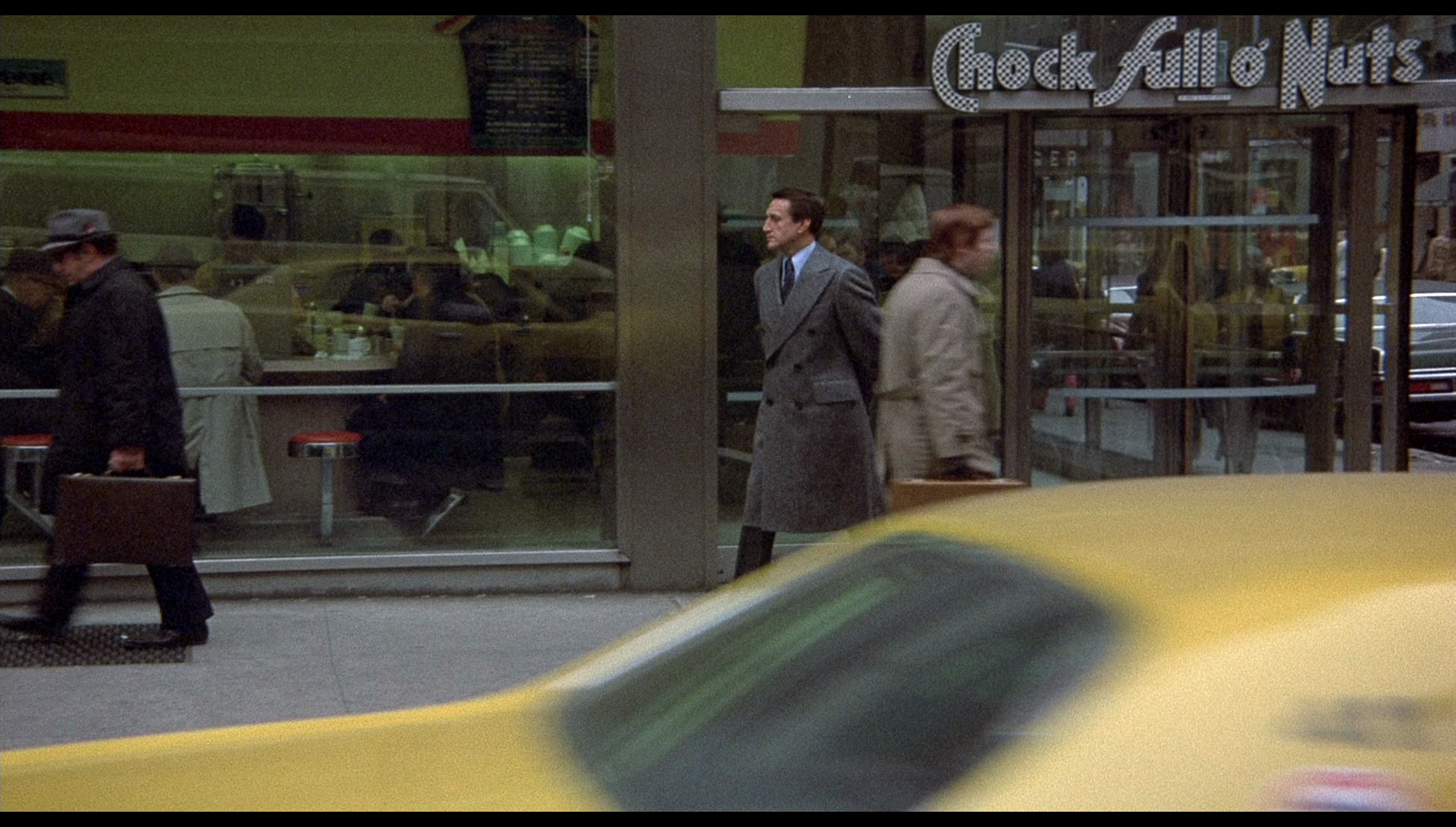 As with The French Connection, the production made strong use of long lenses to establish a documentary-type aesthetic and to also reinforce the theme of surveillance. For example, the opening sequence sees Buddy on the streets, on a surveillance detail, the camera picking him out of the crowd; the flattened perspective tells us this was shot with a long lens, the high angle suggesting a view from an upper storey window across the street, resulting in a sequence whose visual design is very much based on surveillance. The irony here is that Buddy is surveilling his team’s target, whilst the manner in which the sequence is shot places Buddy himself under surveillance – foreshadowing the way in which the narrative turns Buddy’s role on its head, revealing that Buddy’s informant Vito is using Buddy as a source of information. As with The French Connection, the production made strong use of long lenses to establish a documentary-type aesthetic and to also reinforce the theme of surveillance. For example, the opening sequence sees Buddy on the streets, on a surveillance detail, the camera picking him out of the crowd; the flattened perspective tells us this was shot with a long lens, the high angle suggesting a view from an upper storey window across the street, resulting in a sequence whose visual design is very much based on surveillance. The irony here is that Buddy is surveilling his team’s target, whilst the manner in which the sequence is shot places Buddy himself under surveillance – foreshadowing the way in which the narrative turns Buddy’s role on its head, revealing that Buddy’s informant Vito is using Buddy as a source of information.
During the making of the picture, D’Antoni reputedly shot a number of scenes guerilla-style, trying to avoid big groups of spectators by shooting with hidden cameras concealed within vans, out of windows and on top of nearby buildings (Kachmar, 2002: 44). This type of gritty police drama, which used the visual language of non-fiction filmmaking (shooting on location, using long lenses and blended sound), would become a defining paradigm of American cinema of the 1970s and early 1980s, arguably peaking with Sidney Lumet’s Prince of the City (1981) but also evident in earlier films (Lumet’s Serpico, 1973 and Milton Katselas’ Report to the Commissioner, 1975; and, in a more action-oriented context, Barry Shear’s Across 110th Street, 1972), and seems to have had its roots in some of the films noir of the late-1940s/1950s, such as Otto Preminger’s Where the Sidewalk Ends (1950). 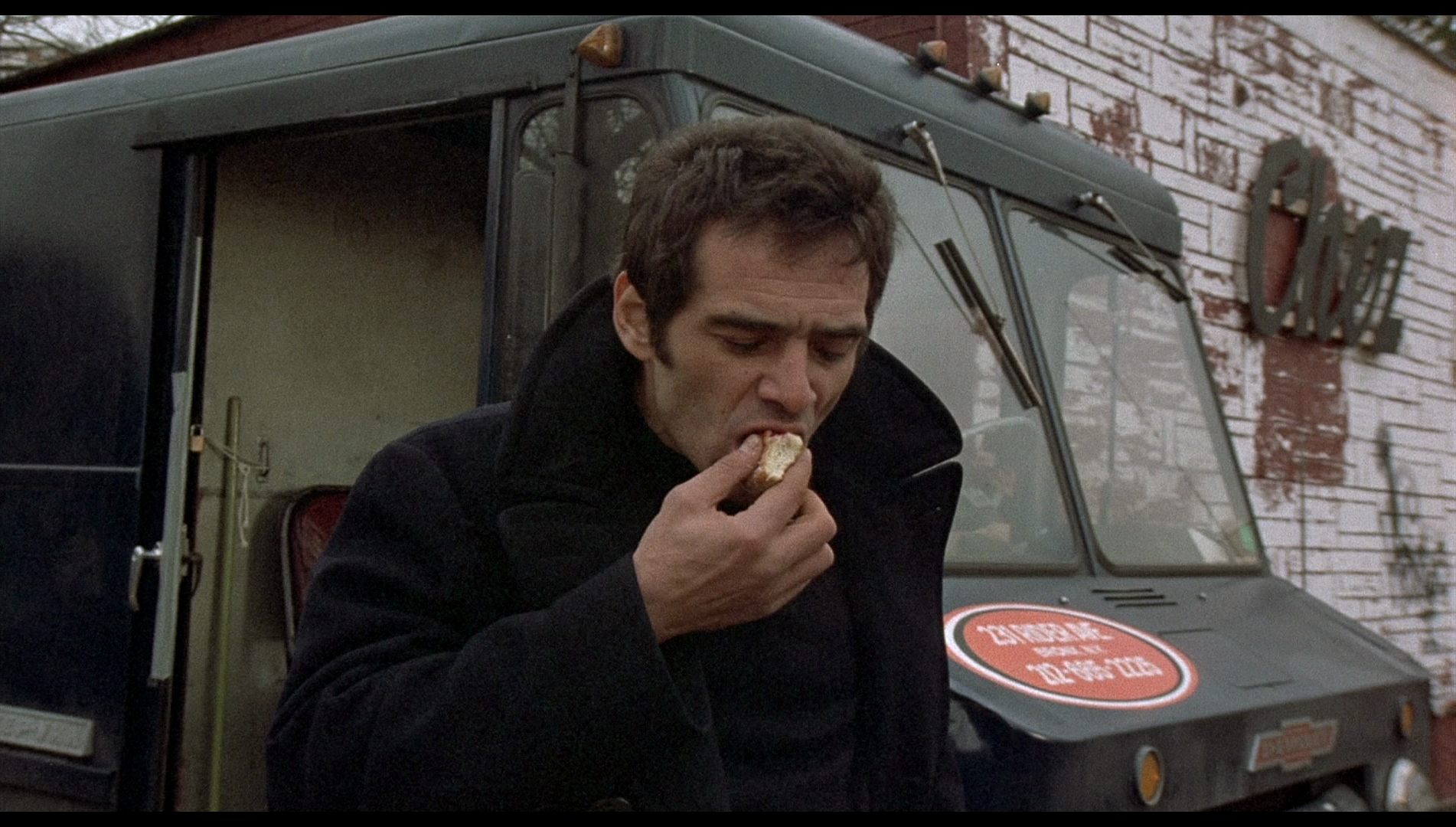 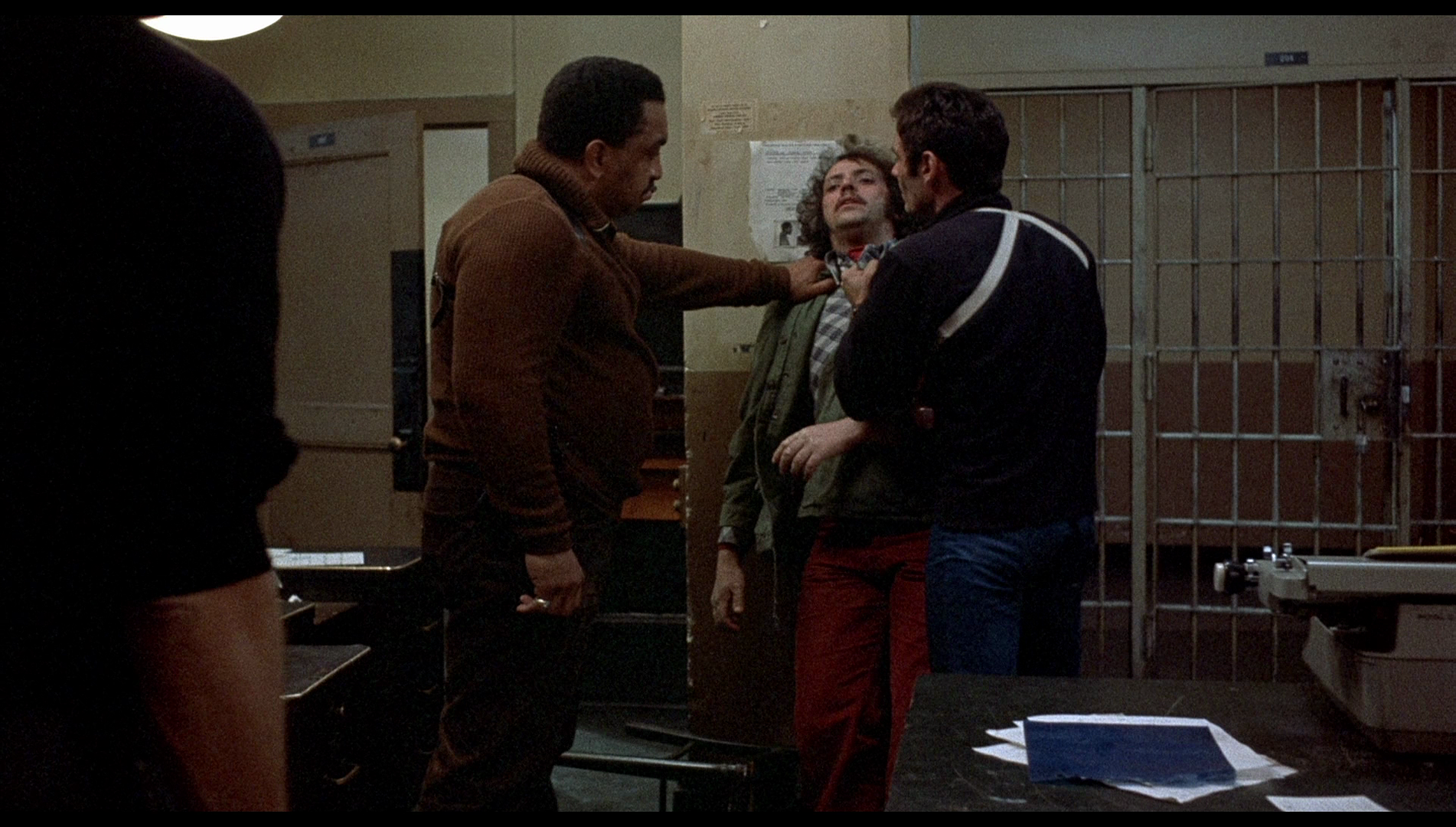 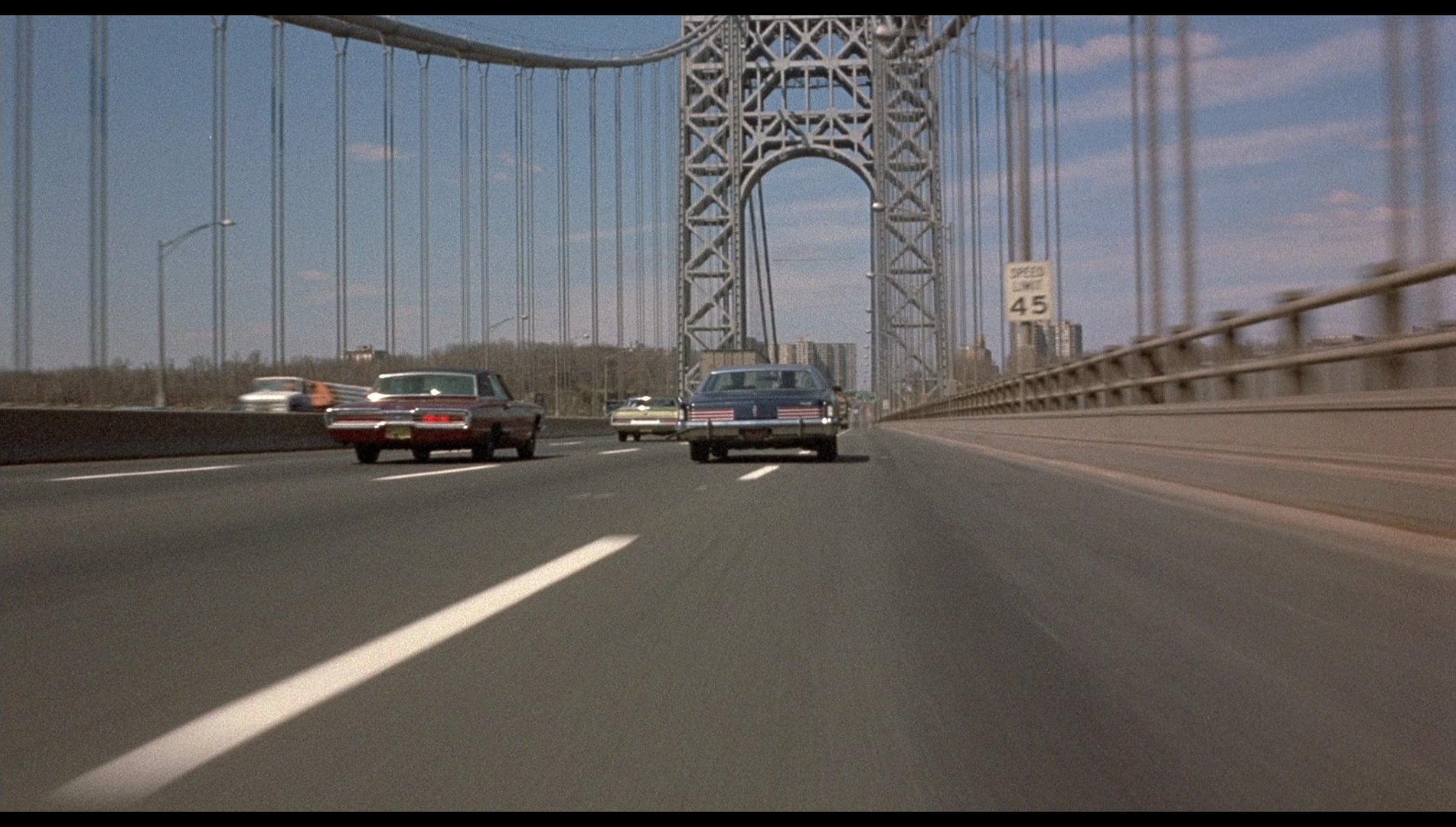
Video
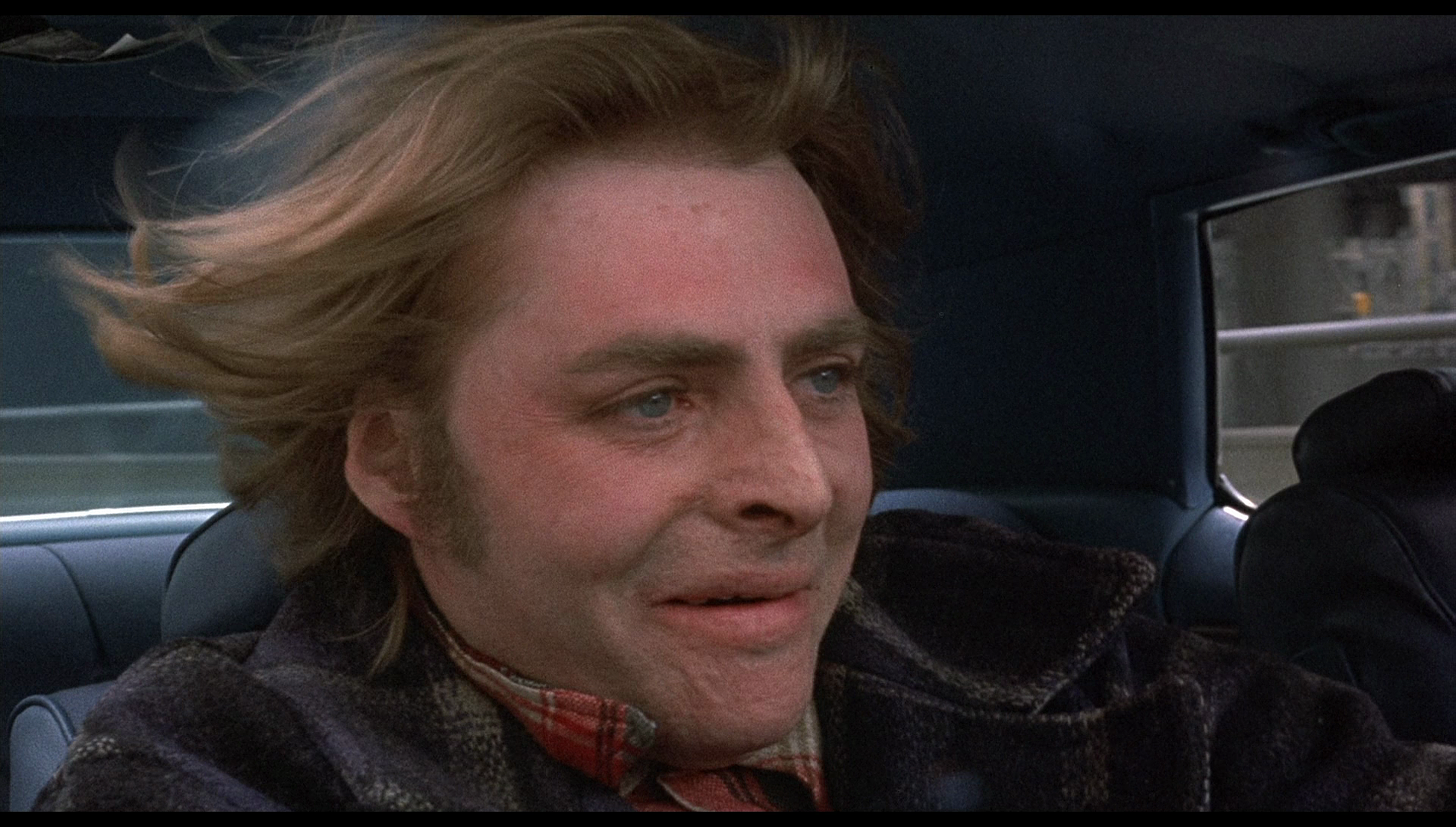 Presented in its original aspect ratio of 1.85:1, The Seven-Ups runs for 103:29 mins. The 1080p presentation uses the AVC codec. From the opening sequence showing New York City at dusk, the presentation exhibits superb contrast, with defined mid-tones and nicely-balanced shadows. As noted above, the use of zoom and telephoto lenses add a visual theme of surveillance, flattening perspective. The photography is conveyed very nicely here, with excellent detail present. Some shots look just a little soft, but I’d hazard a guess that this is down to the aforementioned use of zoom/telephoto lenses during the production. The film has a very ‘cold’ aesthetic which is communicated very nicely in this presentation, and throughout there’s a satisfyingly organic level of grain, ensuring the presentation retains the structure of 35mm film. The presentation would seem to be based on the same master used for the German Blu-ray released a year or two ago, but on this release given a much stronger encode. Presented in its original aspect ratio of 1.85:1, The Seven-Ups runs for 103:29 mins. The 1080p presentation uses the AVC codec. From the opening sequence showing New York City at dusk, the presentation exhibits superb contrast, with defined mid-tones and nicely-balanced shadows. As noted above, the use of zoom and telephoto lenses add a visual theme of surveillance, flattening perspective. The photography is conveyed very nicely here, with excellent detail present. Some shots look just a little soft, but I’d hazard a guess that this is down to the aforementioned use of zoom/telephoto lenses during the production. The film has a very ‘cold’ aesthetic which is communicated very nicely in this presentation, and throughout there’s a satisfyingly organic level of grain, ensuring the presentation retains the structure of 35mm film. The presentation would seem to be based on the same master used for the German Blu-ray released a year or two ago, but on this release given a much stronger encode.
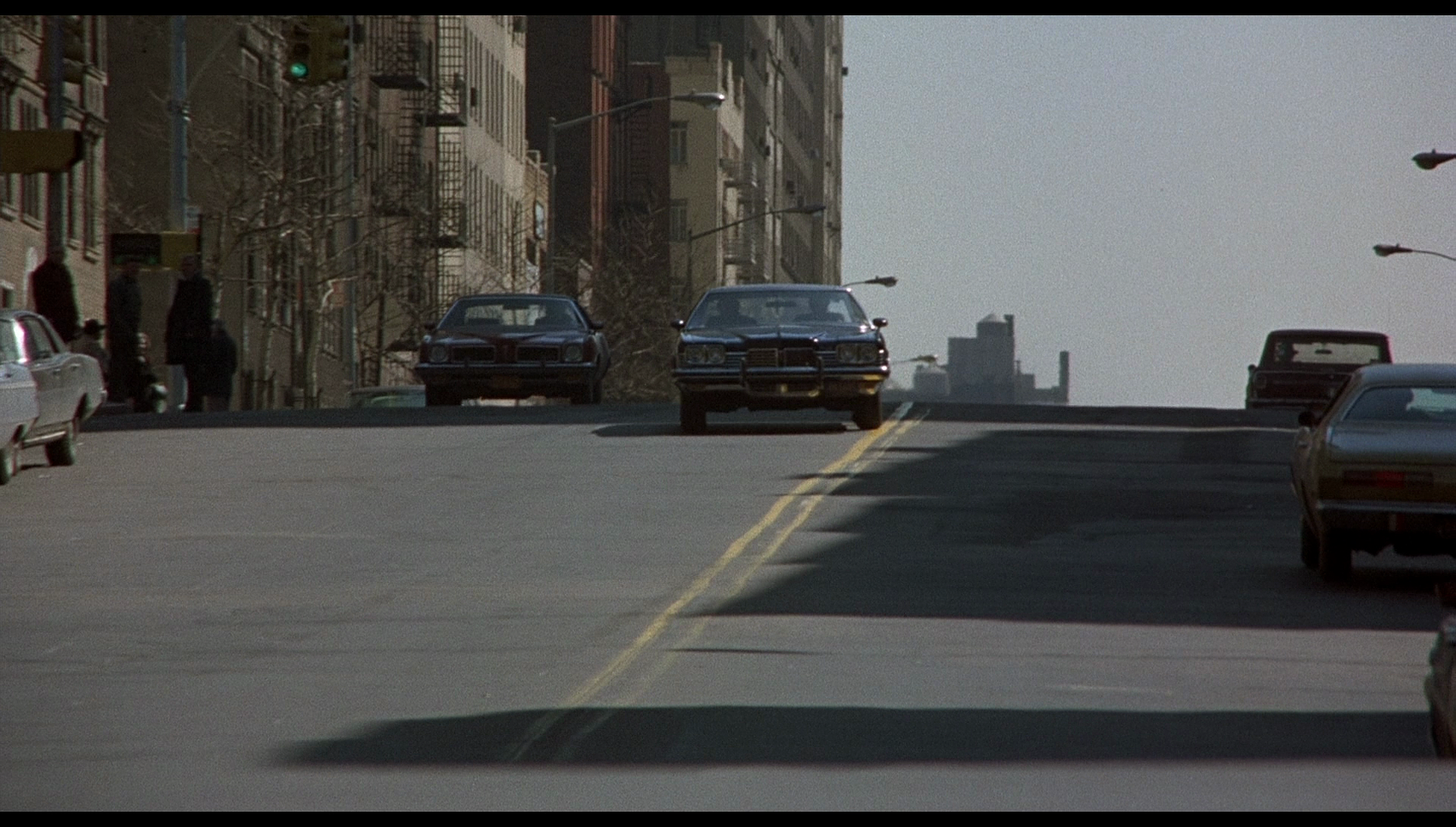 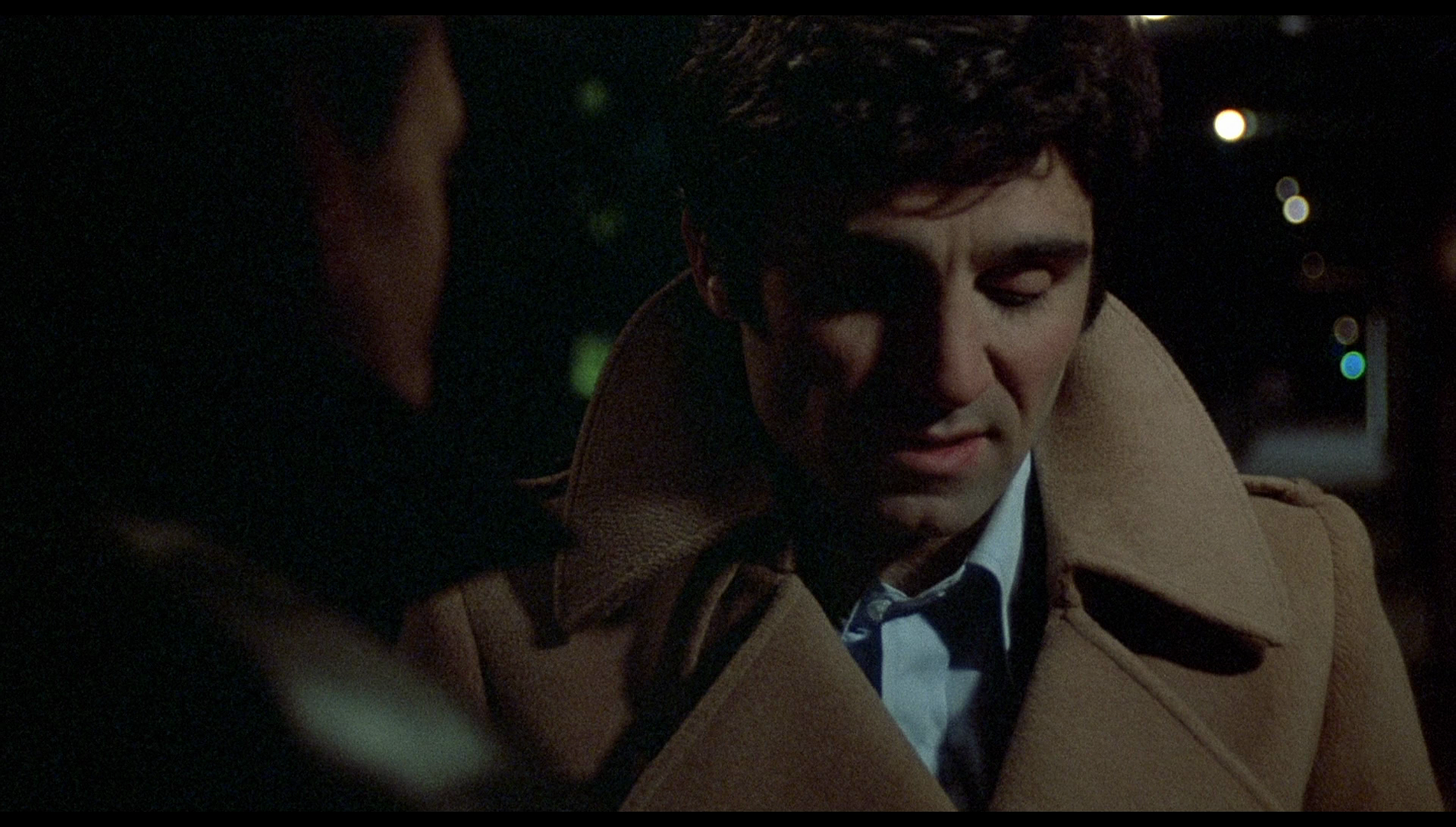 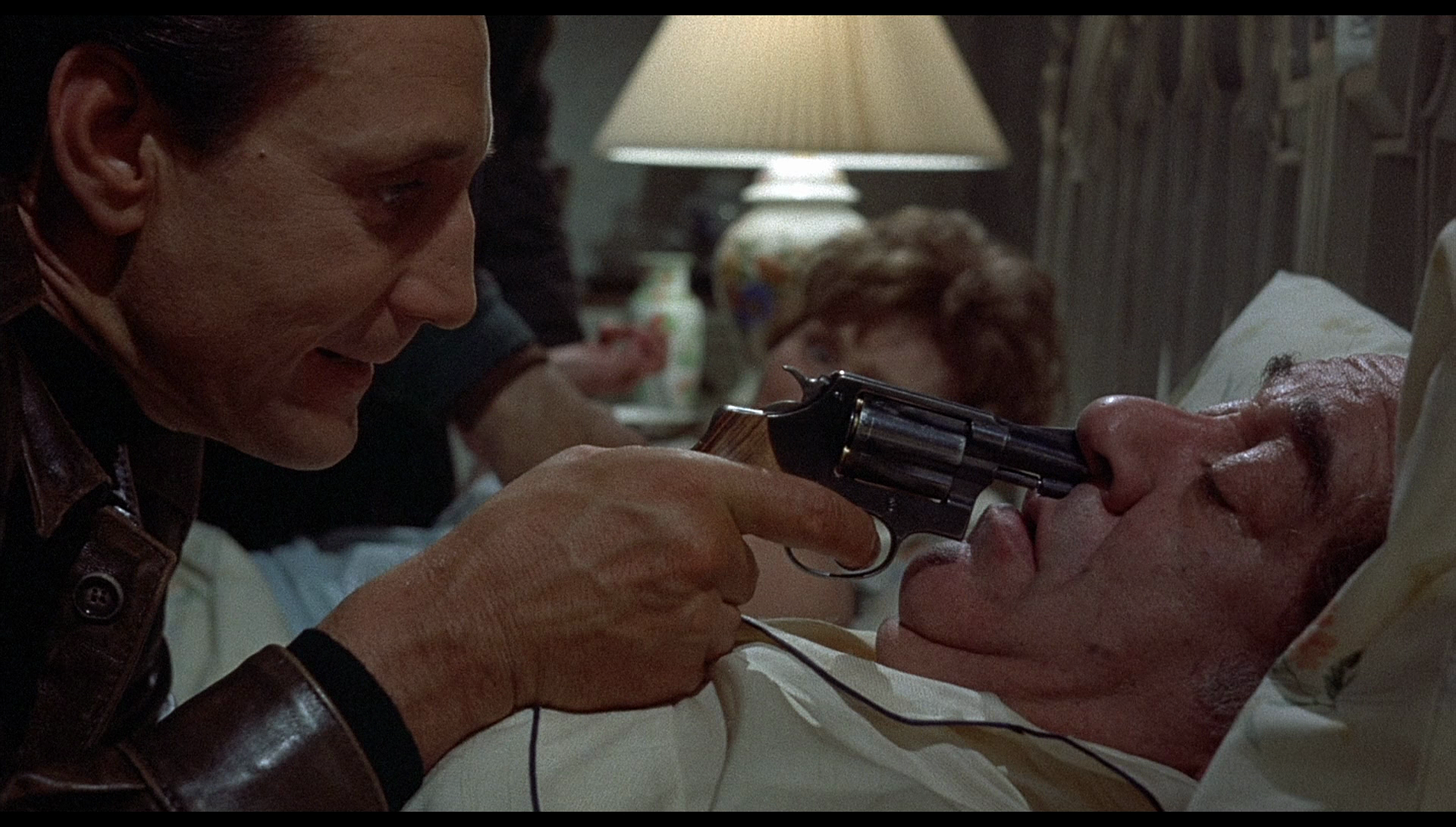
Audio
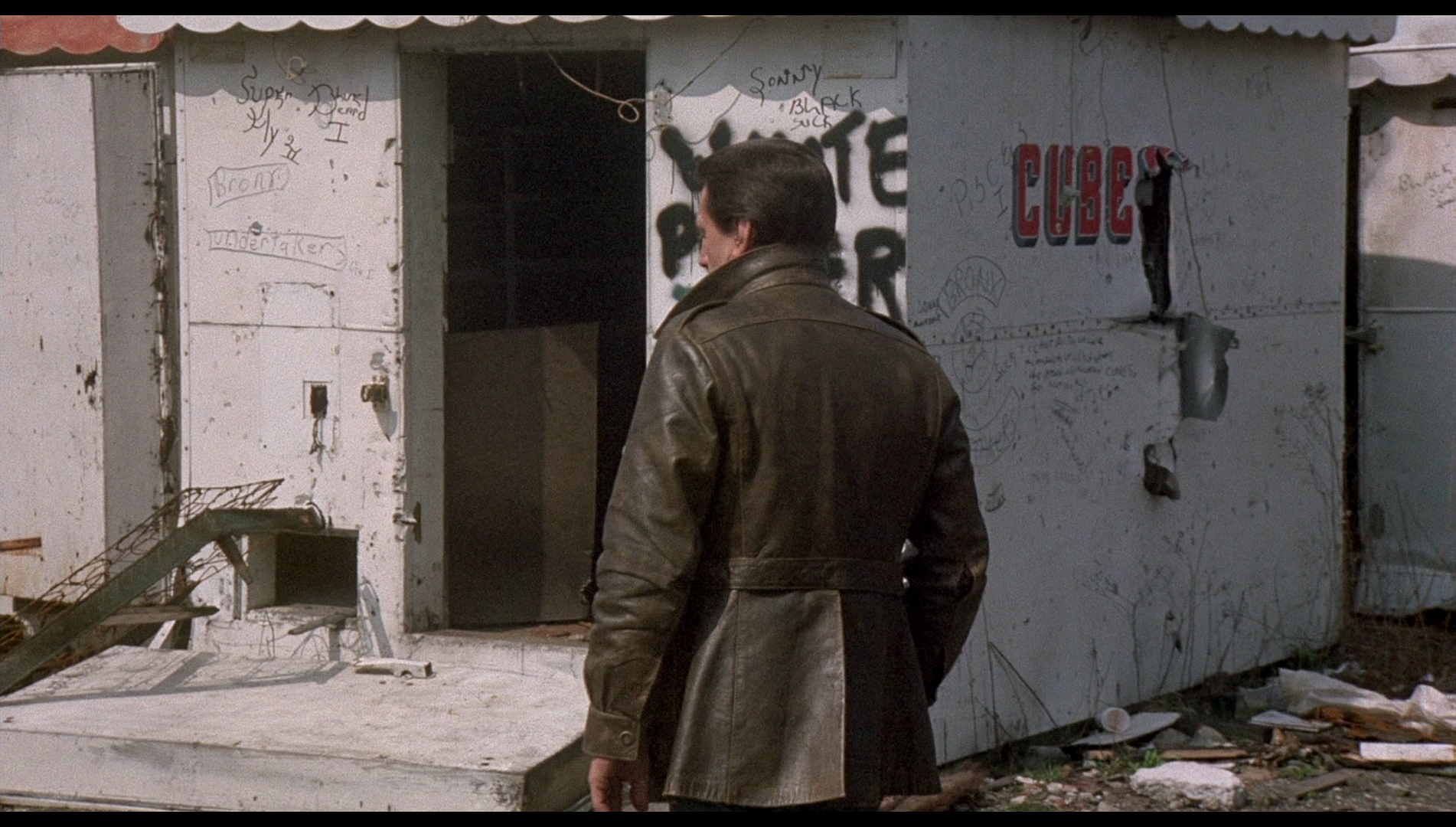 The film is presented with a LPCM 1.0 mono track, with accompanying optional subtitles. This track is clean and clear, with the excellent range evident in the opening bars of Don Ellis’ score – all shrill strings and double bass. As with The French Connection, the film makes much use of naturalistic ambient sound, especially in the street scenes, punctuated by a Don Ellis score that, in its use of double bass and plucked violins, is very similar to the same composer’s score for the Friedkin picture. The film is presented with a LPCM 1.0 mono track, with accompanying optional subtitles. This track is clean and clear, with the excellent range evident in the opening bars of Don Ellis’ score – all shrill strings and double bass. As with The French Connection, the film makes much use of naturalistic ambient sound, especially in the street scenes, punctuated by a Don Ellis score that, in its use of double bass and plucked violins, is very similar to the same composer’s score for the Friedkin picture.
The film is strangely quite shy about using strong language, and in a couple of sequences Buddy and some of the other characters use the word ‘freehole’ as a term of offense: after being chastised by Hanes, for example, Buddy calls Hanes ‘a gutless freehole’. Shortly afterwards, Buddy meets with Vito, and the phrase ‘Hey, freehole, right’, is used in the same dismissive manner with which one might say the phrase ‘Fuck it’. In both instances, the line sounds dubbed. However, the DVD version of the film is exactly the same; one wonders whether this is a case of a film, like James Toback’s Fingers (1976), in which some of the stronger language was dubbed in post-production so as to circumvent the wrath of the MPAA.
Extras
 The disc includes: The disc includes:
- Introduction by Philip D’Antoni (0:10). In this newly-filmed and brief introduction, D’Antoni wishes the viewer a pleasant viewing experience. - Audio commentary with critic Richard Harland Smith. In this engaging commentary track, Richard Harland Smith begins by contextualising the film through a discussion of how the city of New York was represented during the 1970s. He talks about the careers of the principal cast and crew, and particularly interesting is his engagement with specific elements within the film’s mise-en-scène (eg, in the Seven-Ups room within the police department). - The Seven-Ups Connection (21:32). Here, in another newly-filmed piece, D’Antoni reflects on The Seven-Ups. He talks about his early career, before moving into television production in 1963. D’Antoni discusses the popularity of The French Connection and how its success made him popular with the studios. Out of ‘several projects’, D’Antoni eventually chose to make The Seven-Ups. The story was loosely based on a group of police officers Sonny Grosso had known during the 1960s, who had acquired the nickname ‘The Seven-Ups’ for the same reasons Buddy’s team do in the film. The film was almost directed by Noel Black, but D’Antoni was pressured into directing the picture himself by Elmo Williams, the head of the studio. D’Antoni talks about his decision not to be involved in the making of French Connection II. Though fictionalised, the cases in The Seven-Ups were ‘roughly based’ on recollections of cases that Sonny Grosso had worked on. 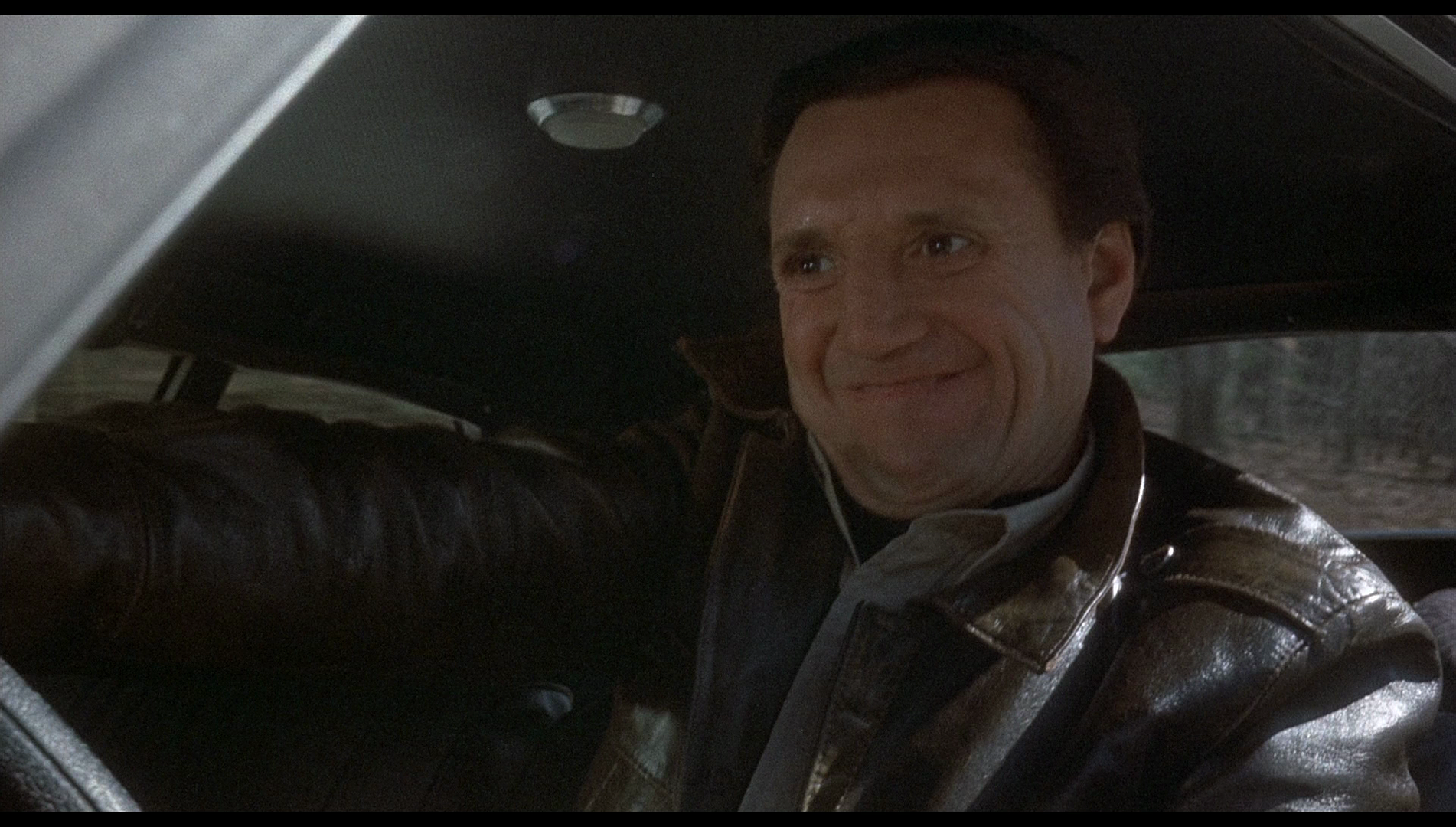
- A Tony Lo Bianco Type (18:09). In another new interview, the actor Tony Lo Bianco talks about his involvement in the film. An ad in a trade paper asked for ‘a Tony Lo Bianco type’. Lo Bianco reasoned, ‘What about me?’ Lo Bianco reflects on his friendship and working relationship with Roy Scheider. He talks about the differences between Sal, the character Lo Bianco played in The French Connection, and Vito in The Seven-Ups. - Real to Reel (24:50). In yet another new interview, technical adviser Randy Jurgensen talks about the relationship between cinema and reality, suggesting ‘you can take fact but you got to put a certain amount of fiction in there to make it entertaining’. Jurgensen talks about his experiences as an undercover cop and how he has used this in his work with filmmakers. He discusses Sonny Grosso and how both he and Jurgensen became involved in the making of The French Connection. He suggests that after working as a cop, being in front of a camera ‘was a lot better’ and ‘the pay was much better’ too. - Cut to the Chase (13:53). In a new featurette, D’Antoni, Jurgensen and Lo Bianco reflect on the car chases in The French Connection and The Seven-Ups. They talk about the differences between the car chases in Bullitt, The French Connection and The Seven-Ups, Jurgensen highlighting the fact that during the chase in Bullitt ‘the street is void of people’. The French Connection’s chase had a lot of ‘stolen’ shots, and Lo Bianco says that ‘a lot of it is for real’ – which is what makes it so effective. All of the participants praise Bill Hickman’s contribution to the car chases in these pictures. - The Anatomy of a Chase (8:20). This vintage featurette, a promotional piece from the time of the picture’s original release, covers the film’s production, focusing specifically on the shooting of the pivotal car chase. - Original Super 8 Version (16:44). This is a replica of the original, abbreviated Super 8 version of the film produced for home viewing. - Randy Jurgensen’s Scrapbook (2:58). Here, Jurgensen shares some of the onset photographs in his possession, along with other ephemera from the production (for example, one of the call sheets). - Lobby Cards, Stills and Media Gallery (2:10). - Theatrical Trailer (2:18). - Theatrical Teaser (1:09).
Overall
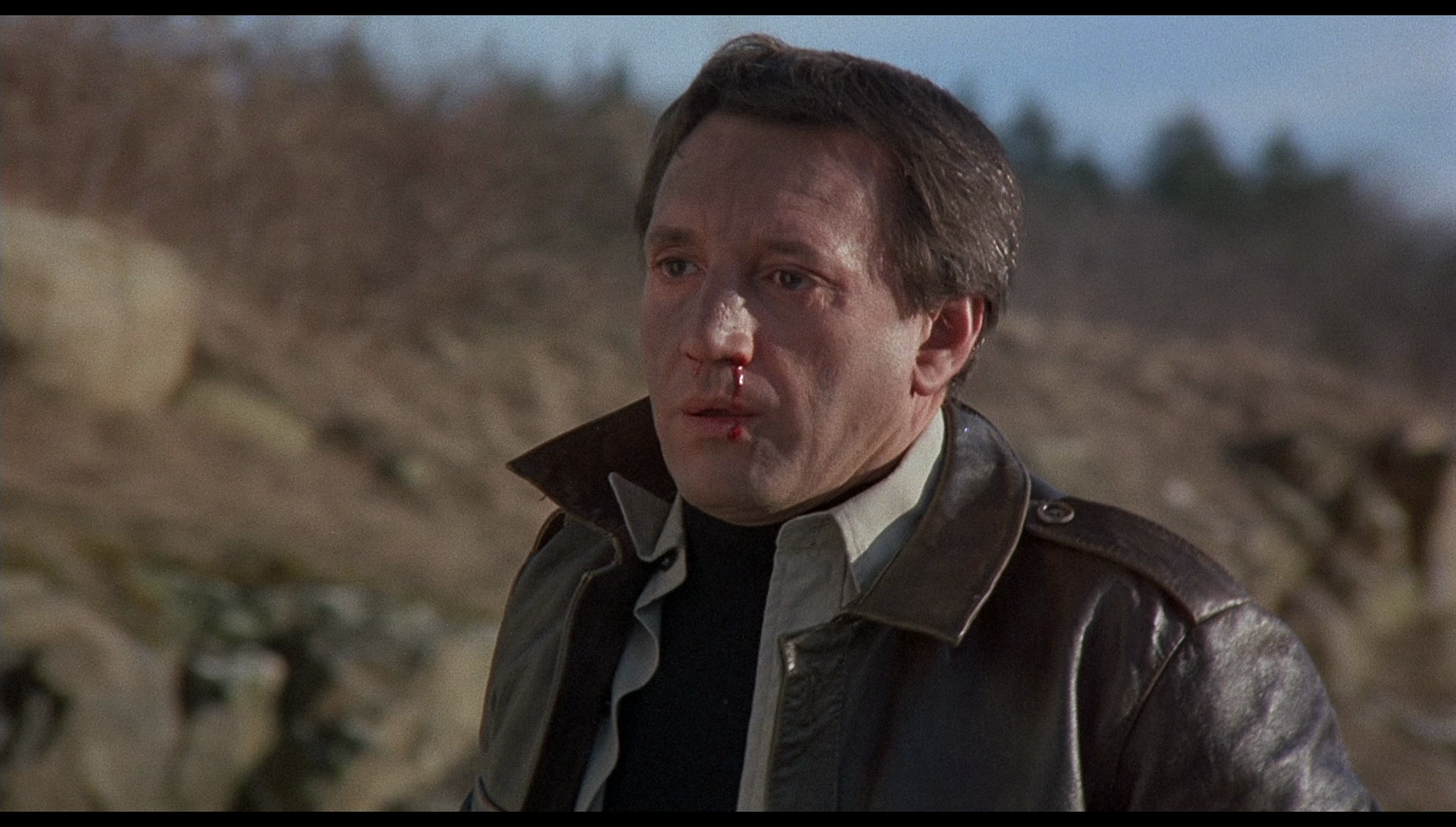 Whilst obviously D’Antoni’s attempt to ‘up the ante’ and further the paradigms established in Bullitt and The French Connection, The Seven-Ups establishes its own territory and works independently from D’Antoni’s previous police pictures. Certainly, visually, and in terms of its focus on New York, it has the most in common with The French Connection; and in his single-mindedness, Buddy is reminiscent of both Steve McQueen’s Frank Bullitt and Gene Hackman’s ‘Popeye’ Doyle, though as with The French Connection the principal input of a real-life detective (Sonny Grosso) and the relaxation of censorship that followed the abandonment of the Production Code in the late-1960s result in a film that feels much more ‘gritty’ than Bullitt. (Though noticeably, The Seven-Ups is strangely shy about the use of strong language, as noted in the ‘audio’ section of this review.) The whole picture builds towards a tremendously effective, unsentimental closing sequence that compares with the bleak ending of Peter Yates’ The Friends of Eddie Coyle (1973). Whilst obviously D’Antoni’s attempt to ‘up the ante’ and further the paradigms established in Bullitt and The French Connection, The Seven-Ups establishes its own territory and works independently from D’Antoni’s previous police pictures. Certainly, visually, and in terms of its focus on New York, it has the most in common with The French Connection; and in his single-mindedness, Buddy is reminiscent of both Steve McQueen’s Frank Bullitt and Gene Hackman’s ‘Popeye’ Doyle, though as with The French Connection the principal input of a real-life detective (Sonny Grosso) and the relaxation of censorship that followed the abandonment of the Production Code in the late-1960s result in a film that feels much more ‘gritty’ than Bullitt. (Though noticeably, The Seven-Ups is strangely shy about the use of strong language, as noted in the ‘audio’ section of this review.) The whole picture builds towards a tremendously effective, unsentimental closing sequence that compares with the bleak ending of Peter Yates’ The Friends of Eddie Coyle (1973).
The presentation of the film on this Blu-ray release is superb, and the disc contains a dizzying array of contextual material. This release comes with the highest recommendation. References: Kachmar, Diane C, 2002: Roy Scheider: A Film Biography. London: McFarland & Company, Inc Mesce, Bill, Jr, 2007: Overkill: The Rise and Fall of Thriller Cinema. London: McFarland & Company, Inc Paul, Louis, 2008: Tales from the Cult Film Trenches: Interviews with 36 Actors from Horror, Science Fiction and Exploitation Cinema. London: McFarland & Company, Inc Simon, Art, 2016: ‘“One Big, Lousy X”: The Cinema of Urban Crisis’. Lucia, Cynthia et al (eds), 2016: American Film History: Selected Readings, 1960 to the Present, Volume 2. London: Wiley-Blackwell: 105-17 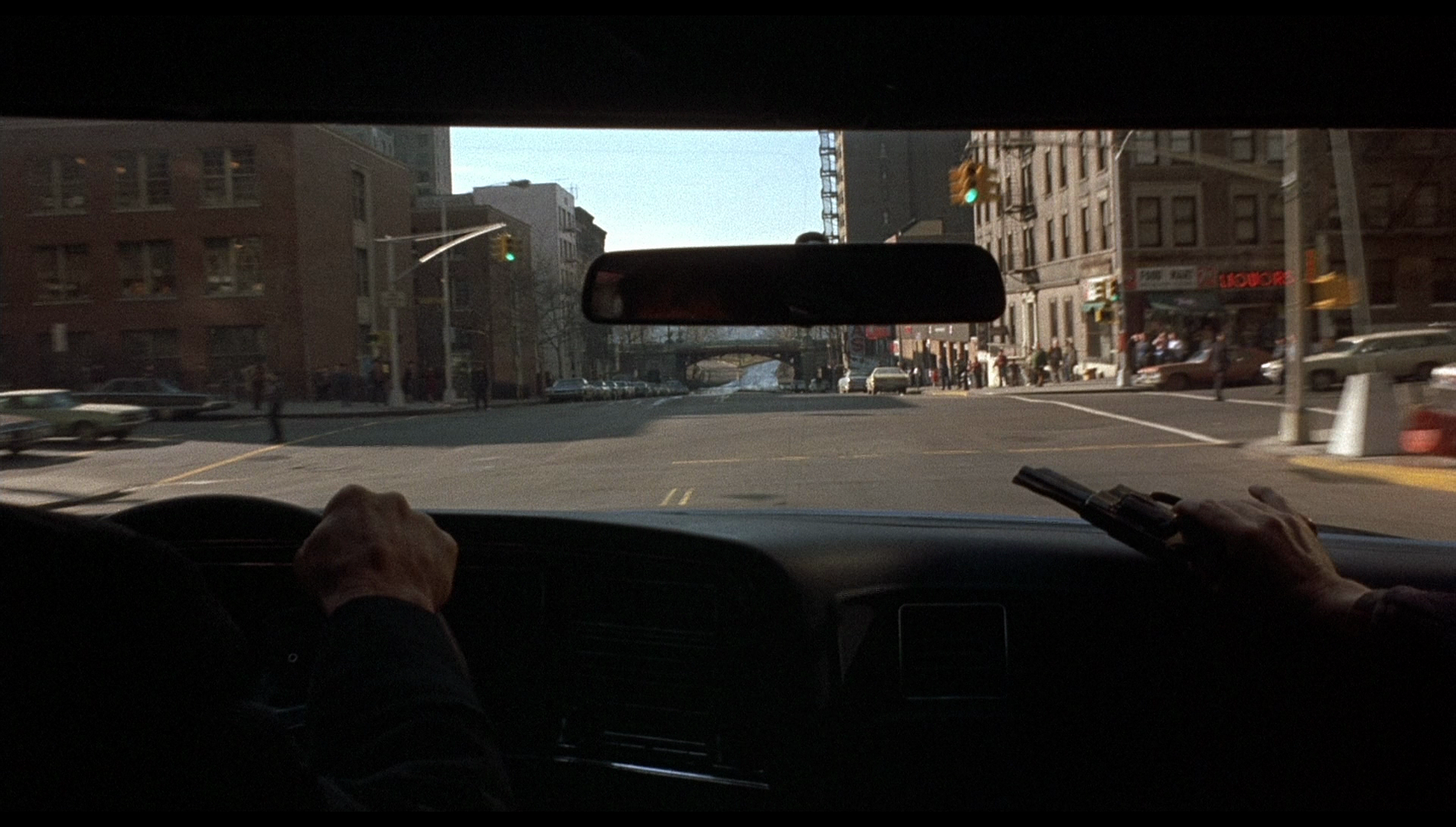
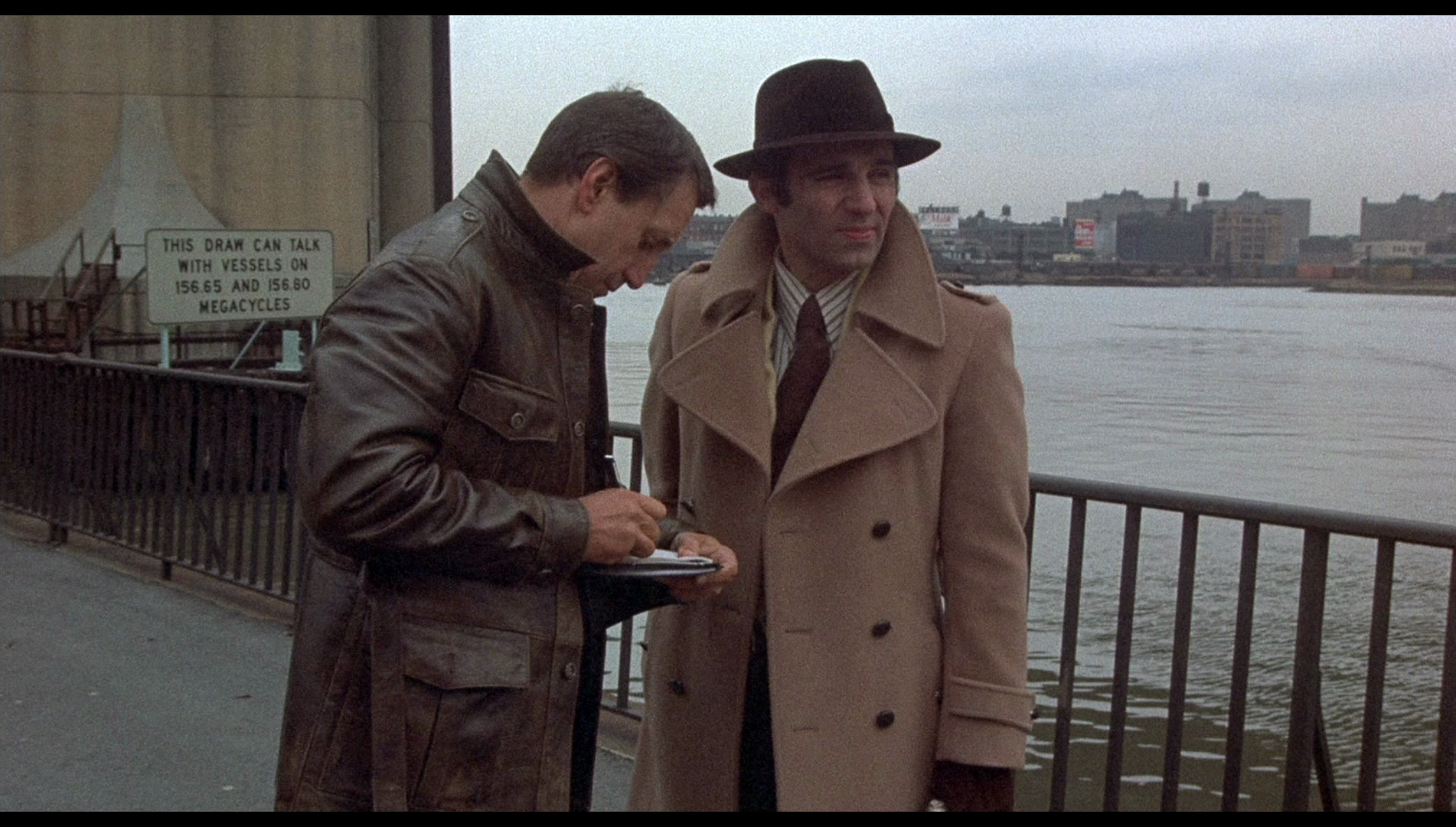
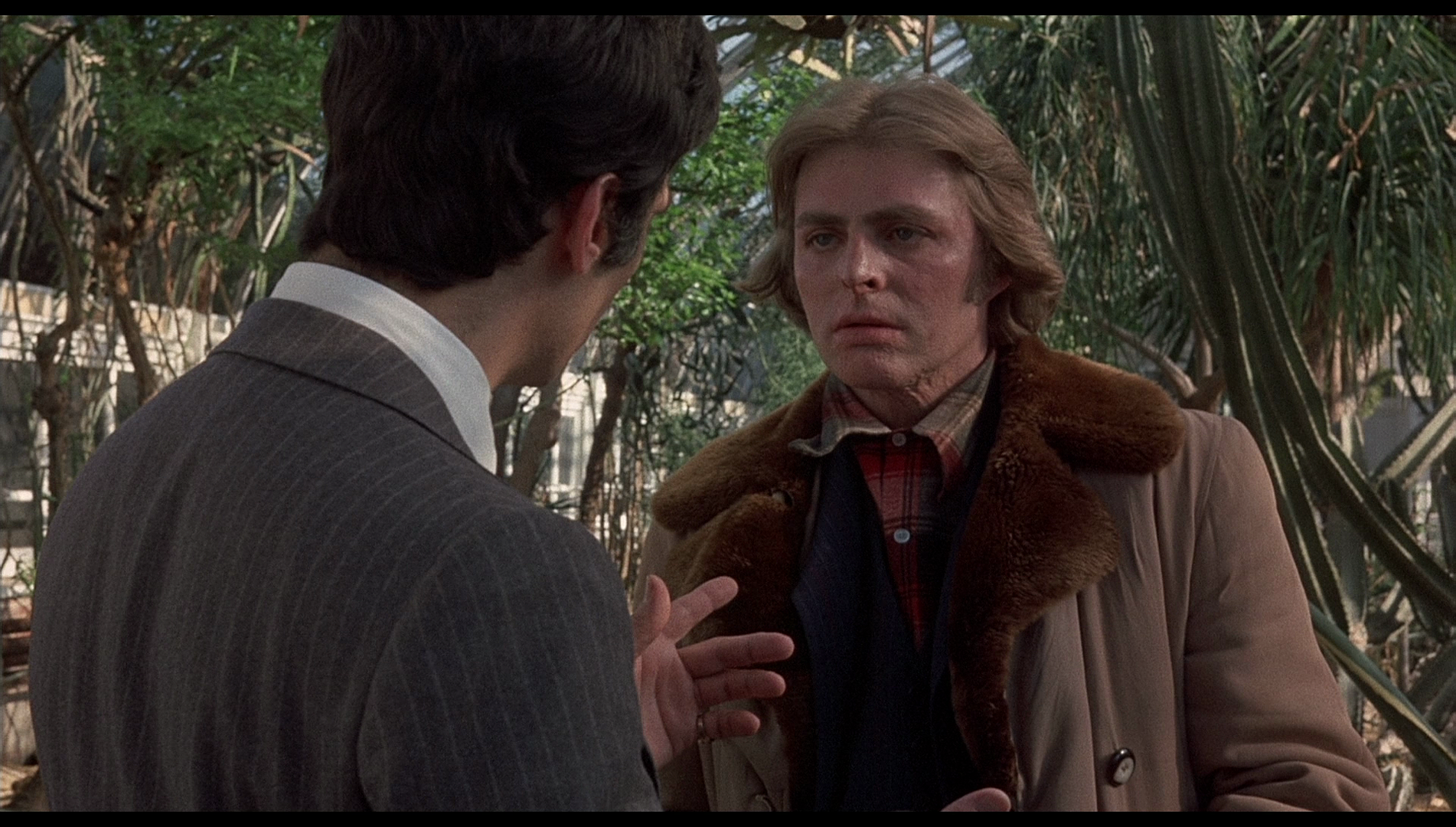
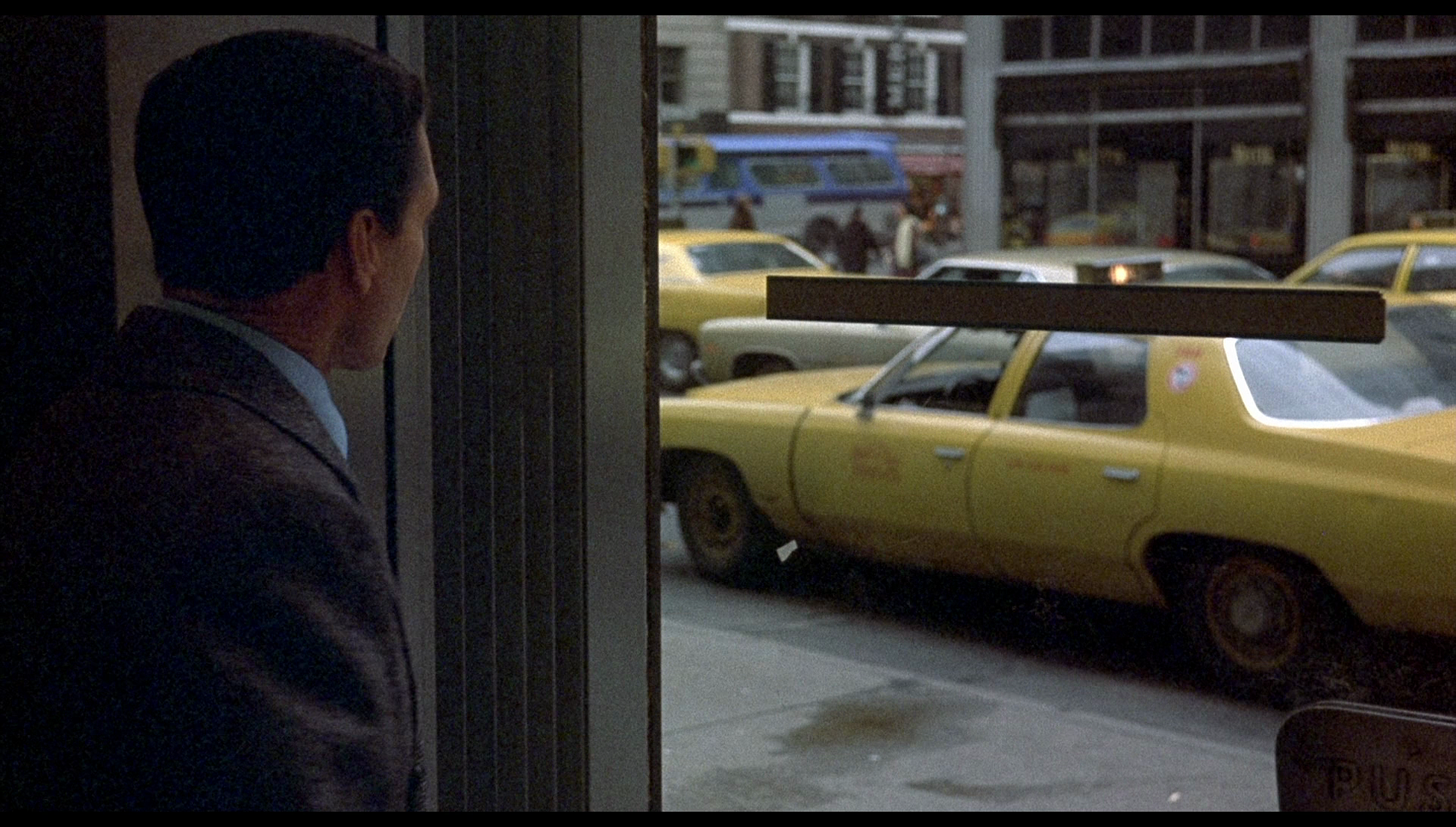
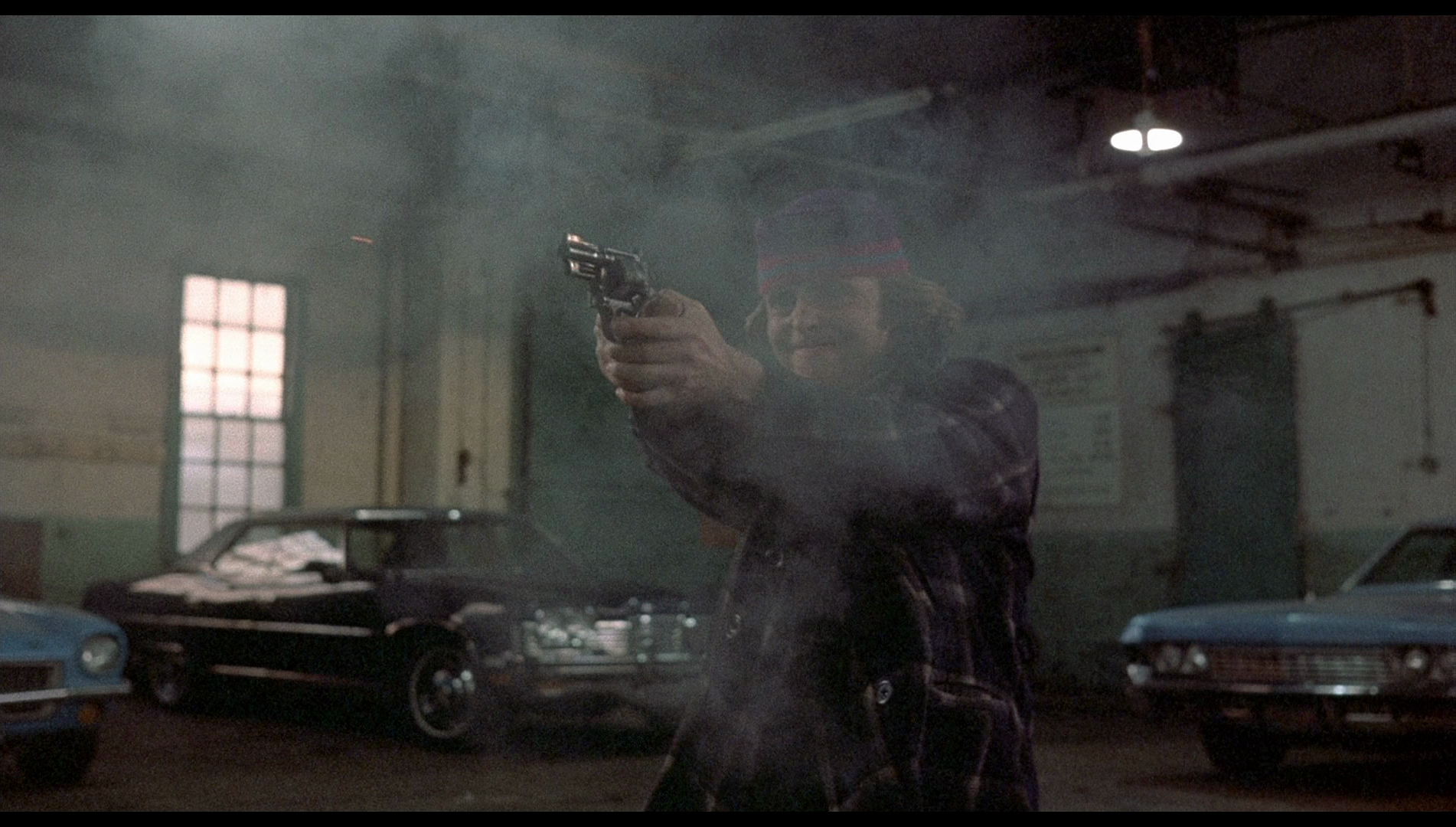
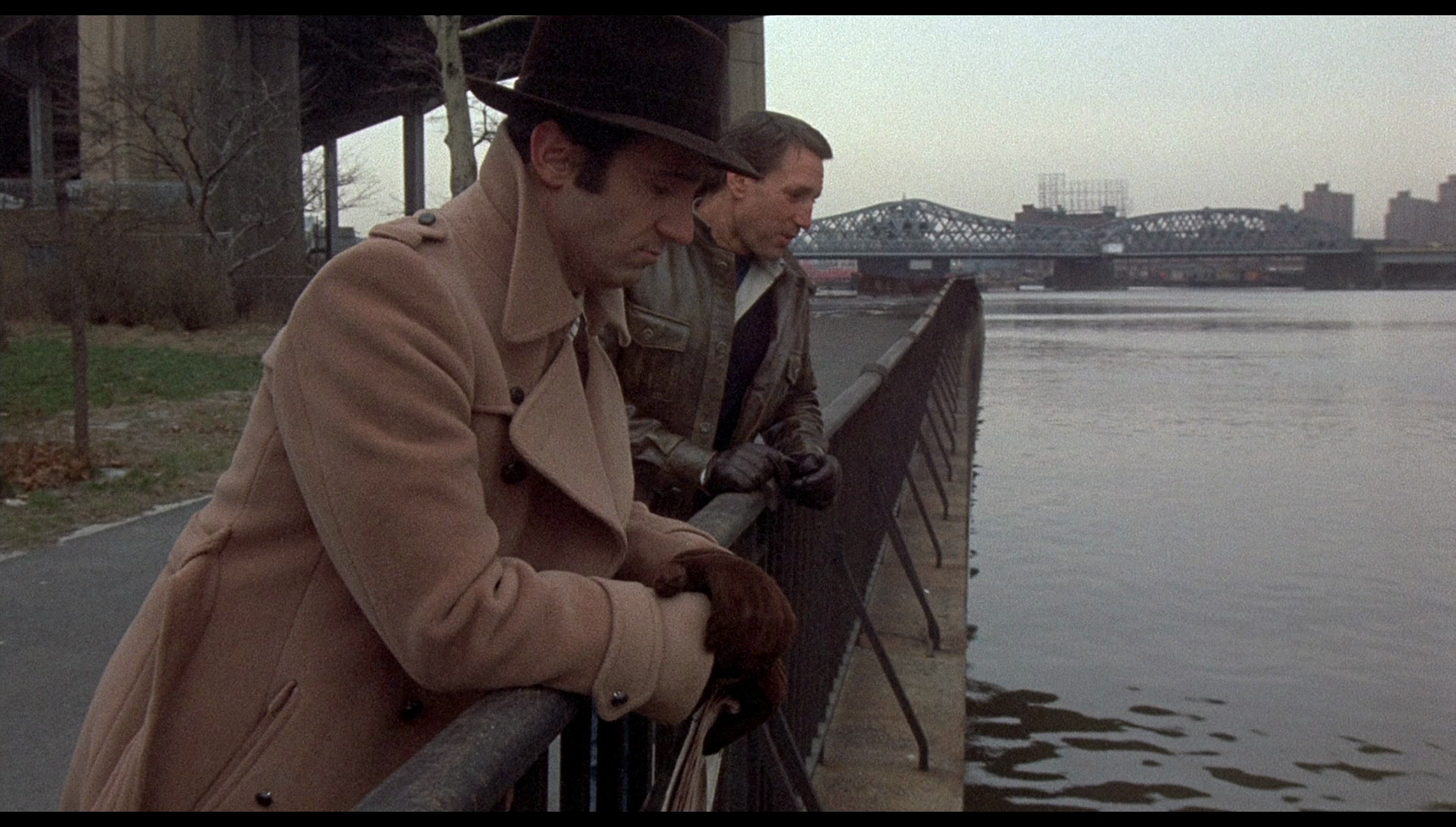
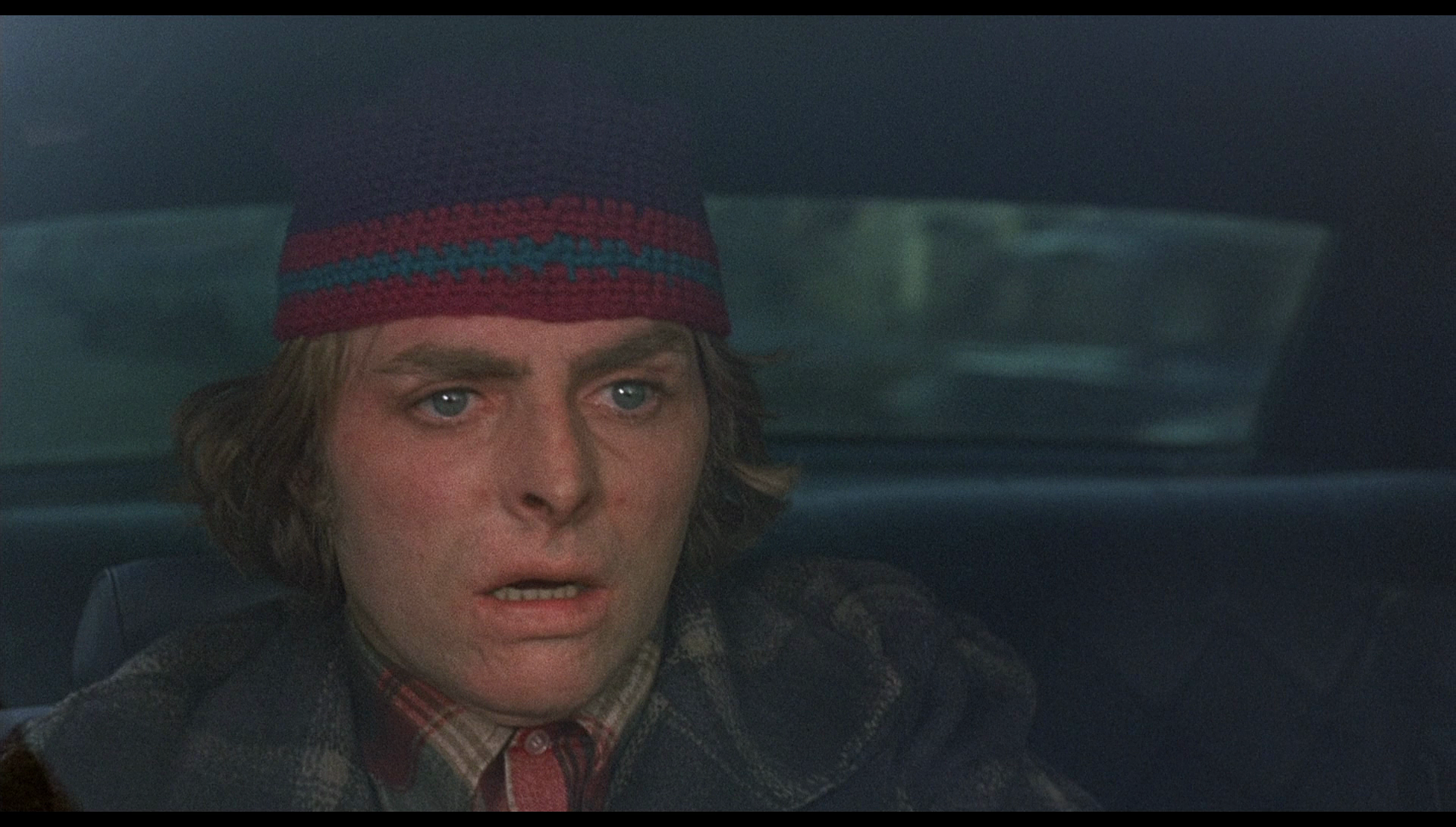
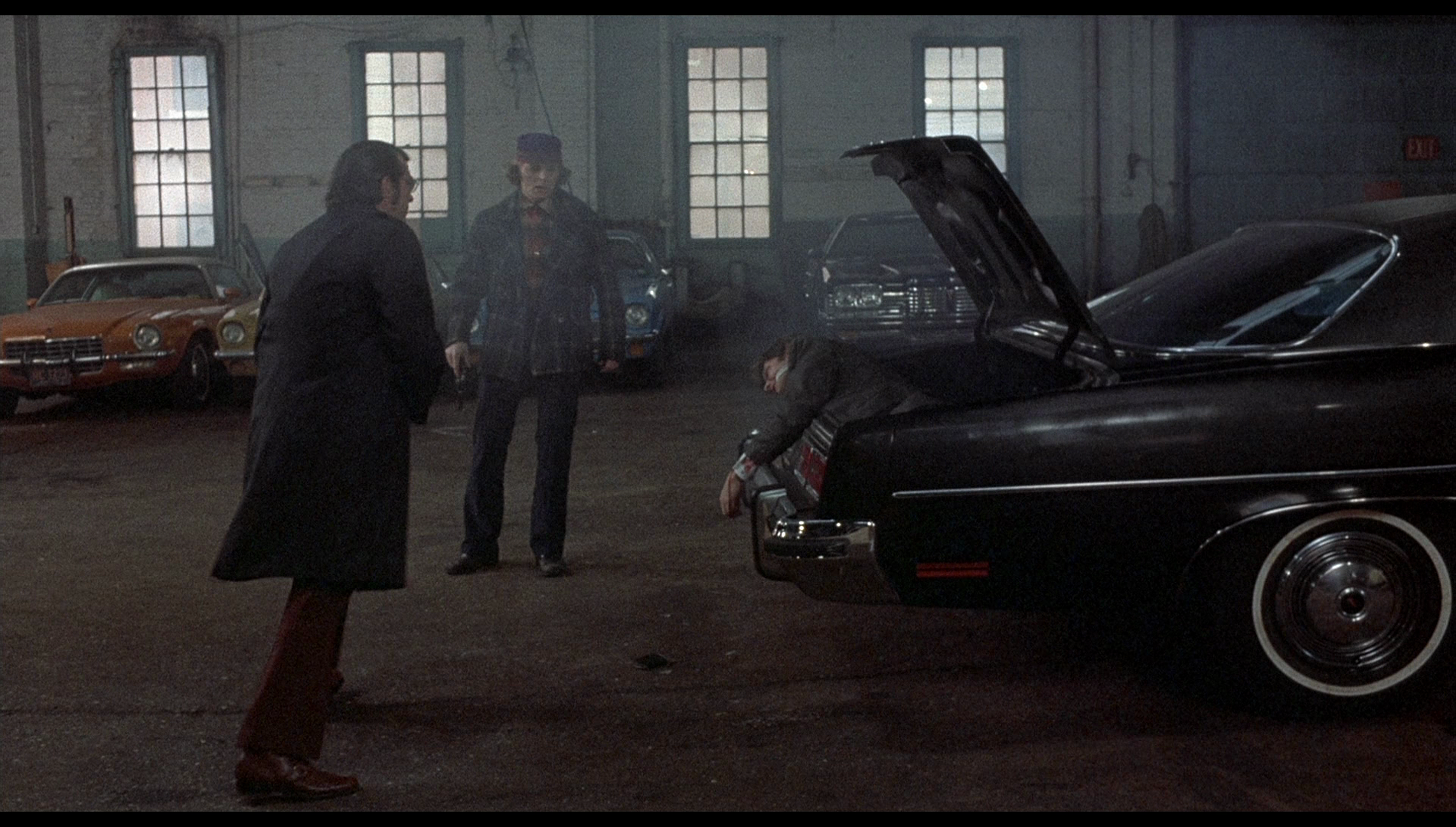
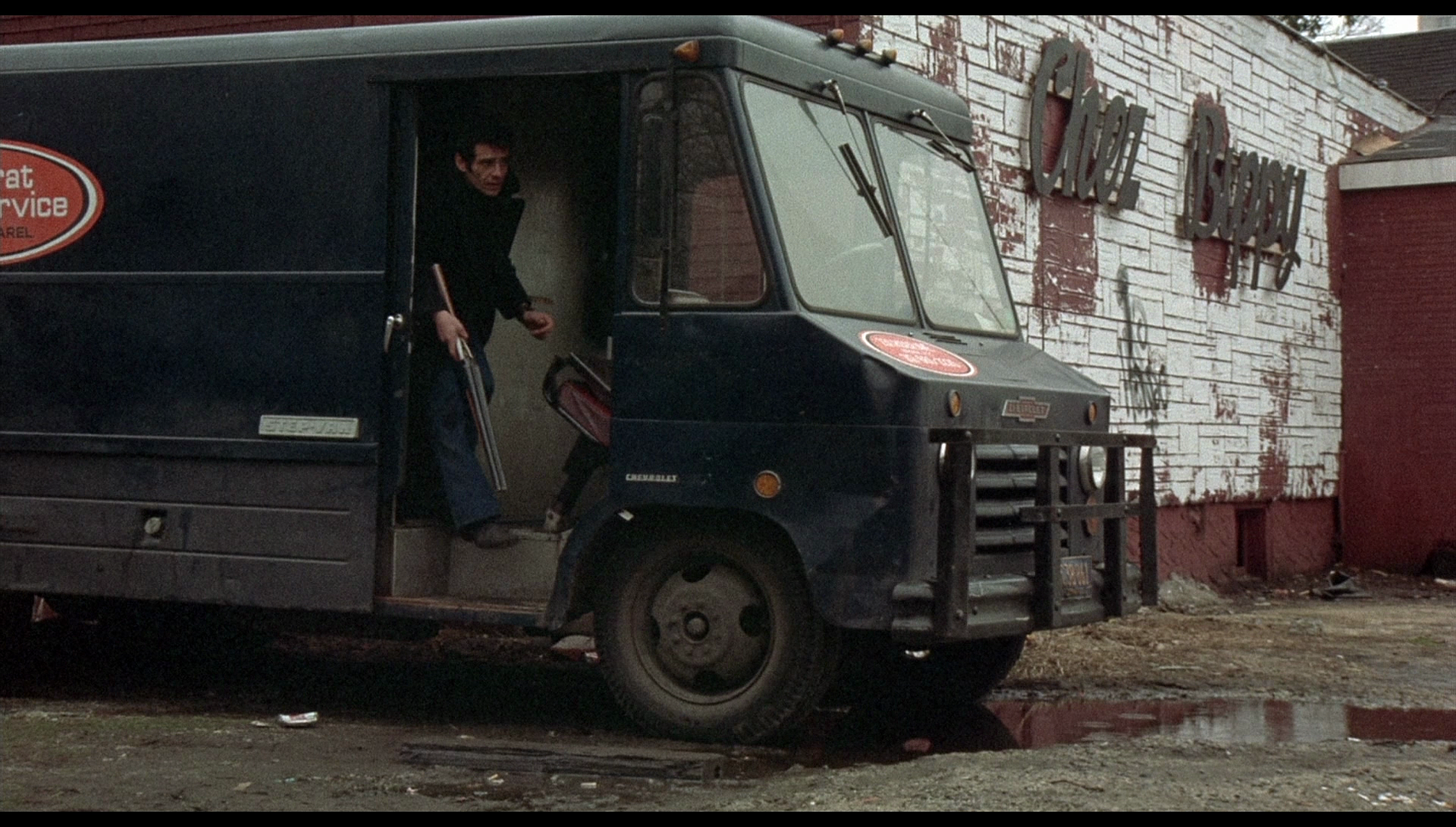

|
|||||

|